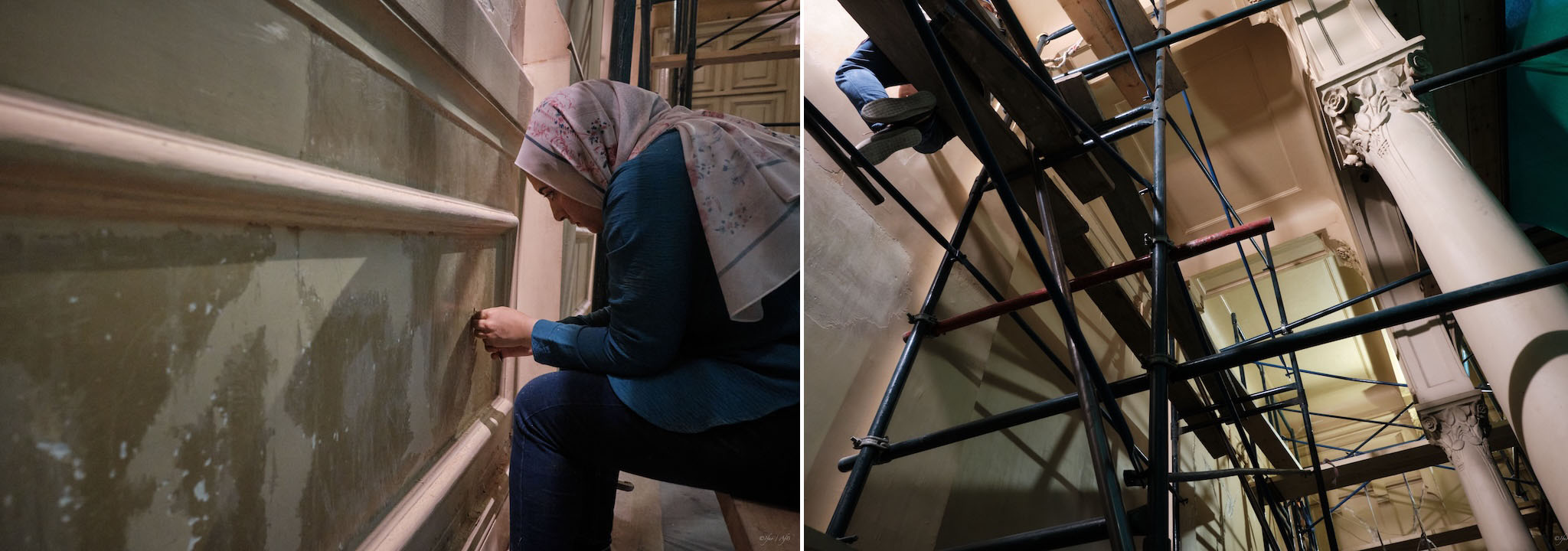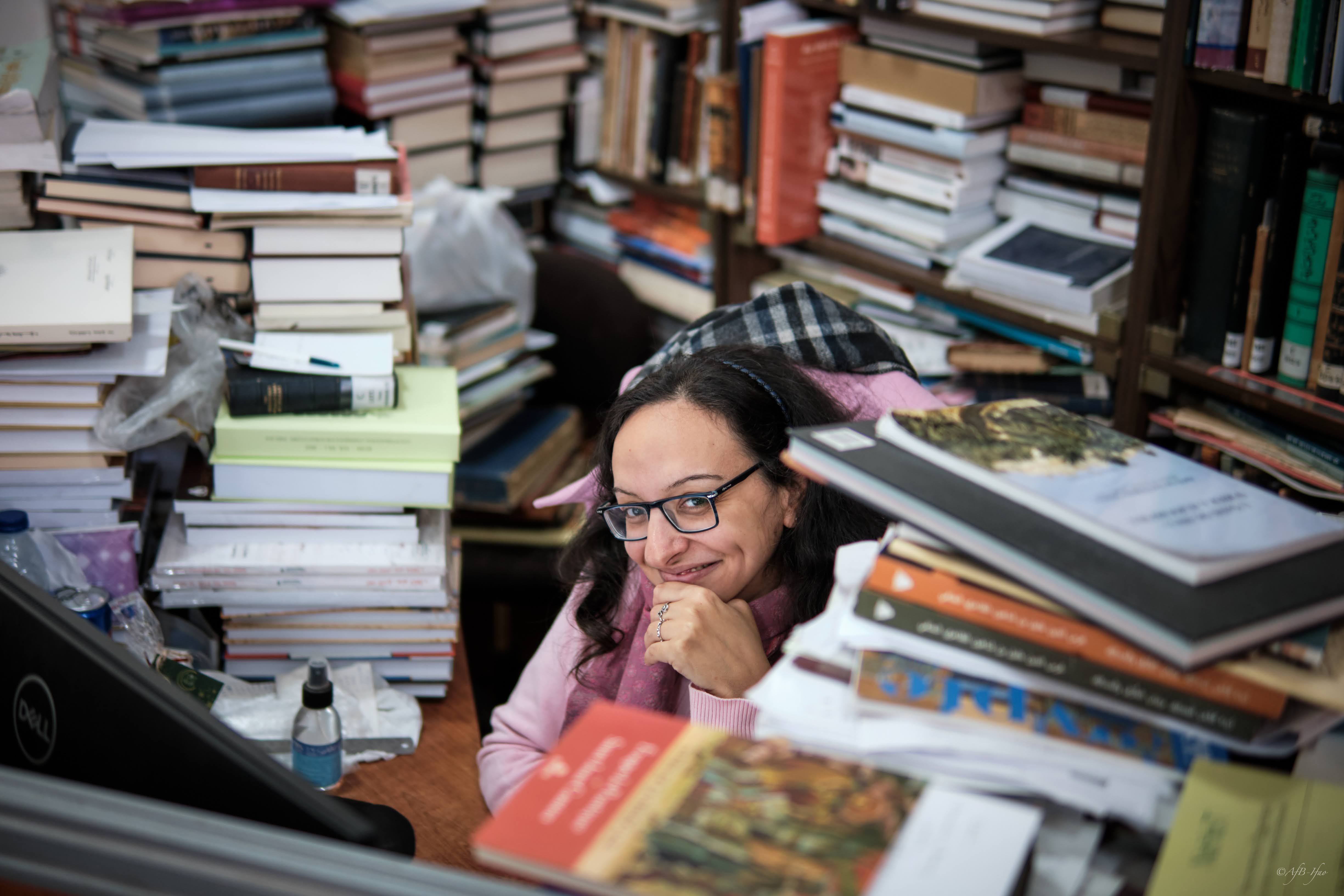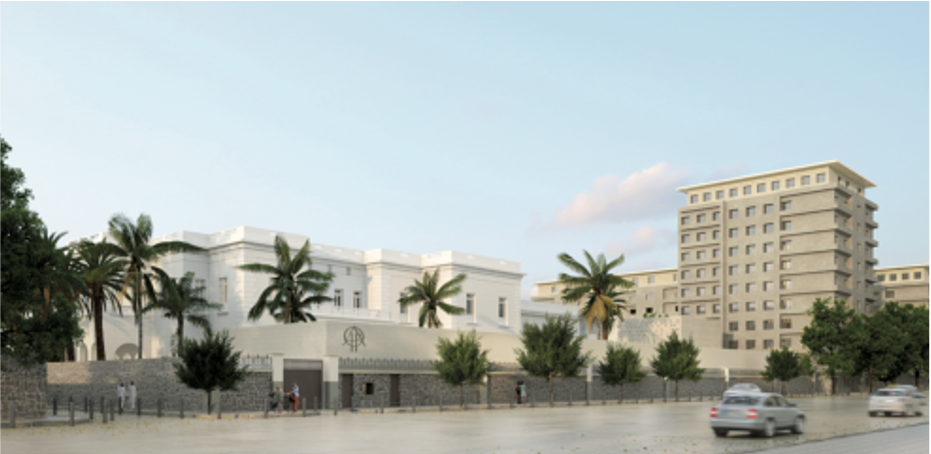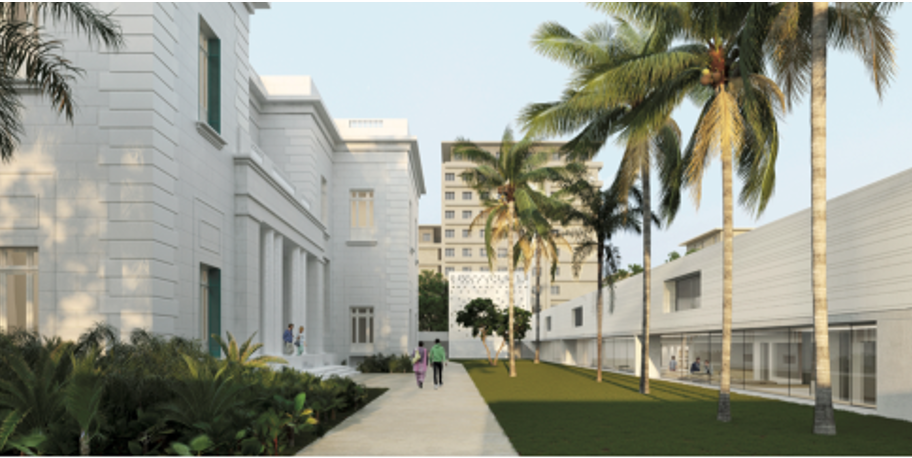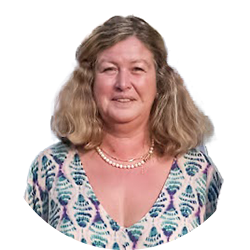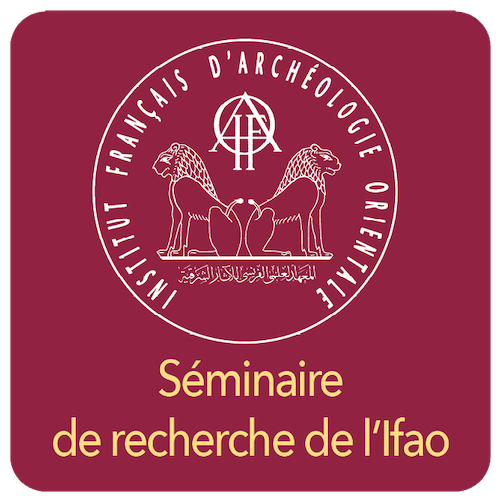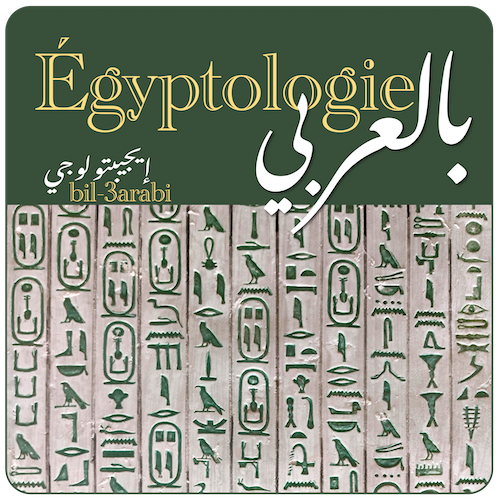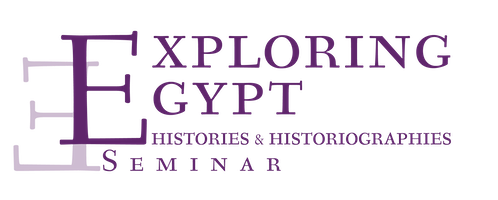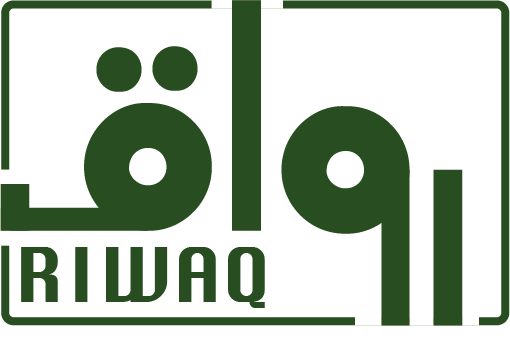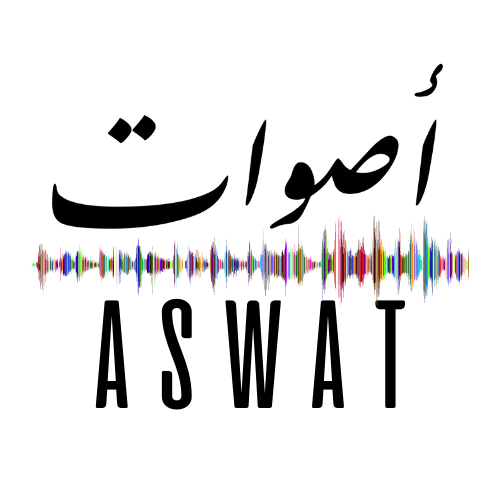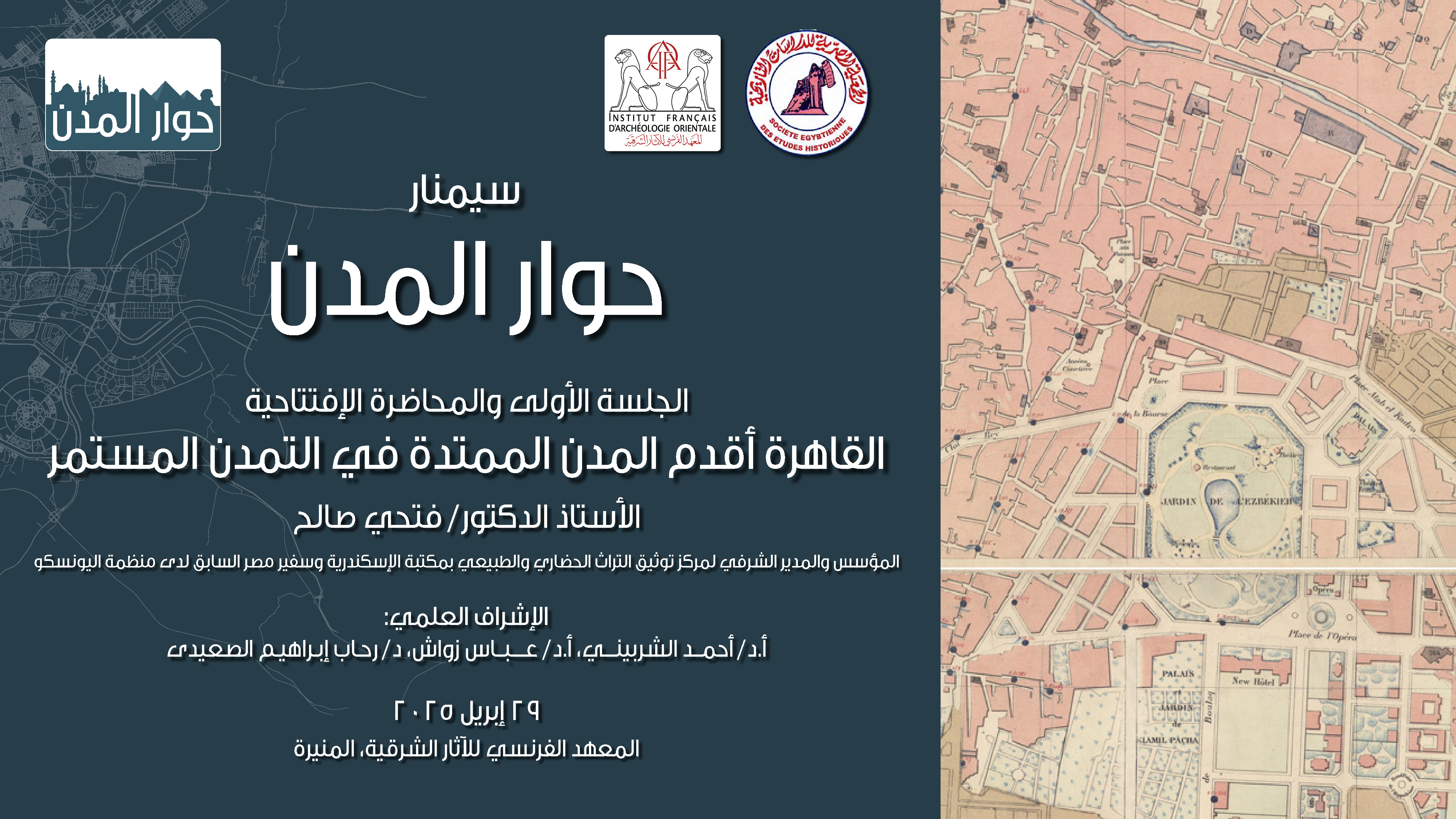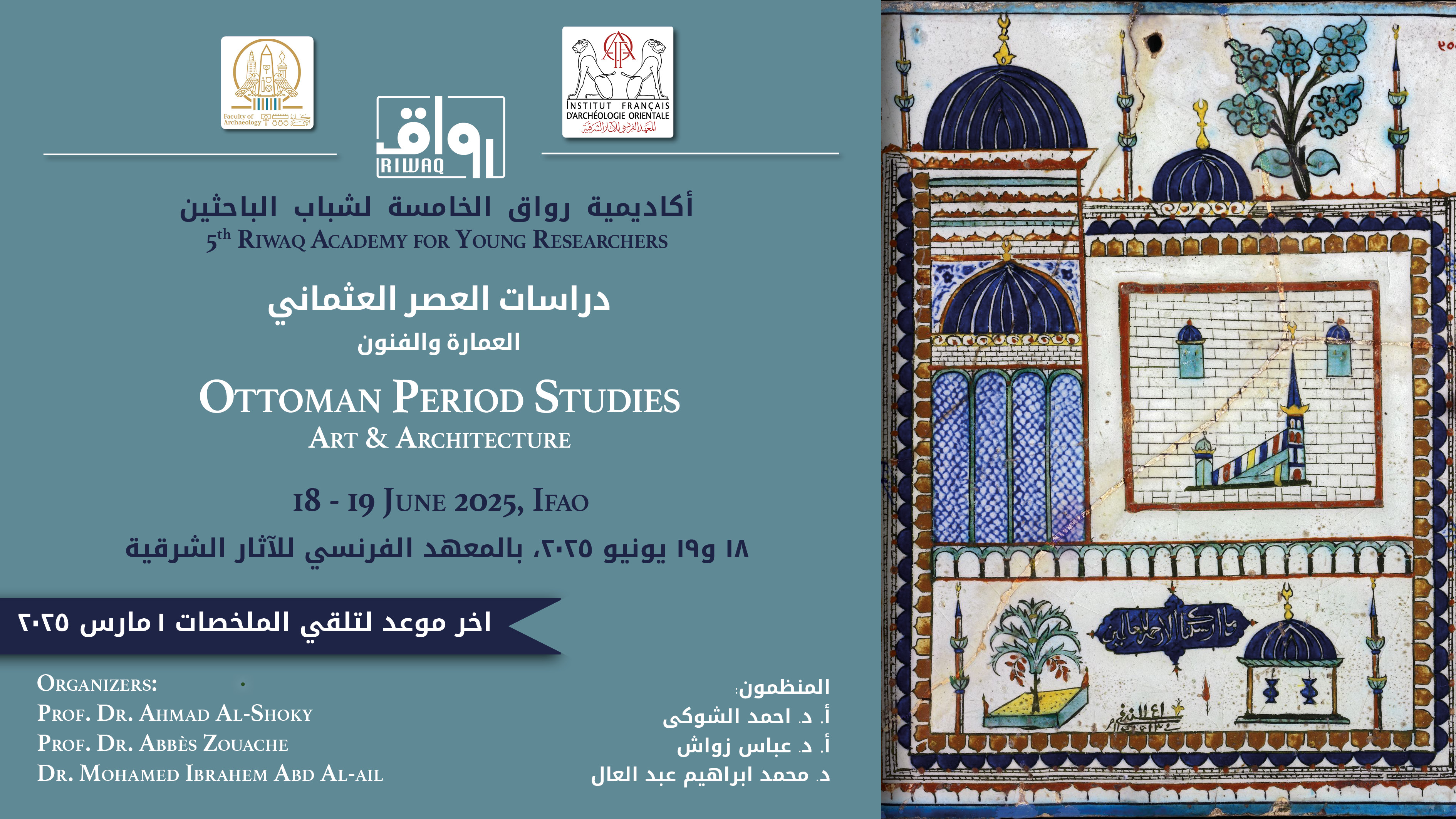Lettre d’information de l’Ifao
Juillet 2025
Rubriques : (-) À la une (-) Vie du Palais (-) Quelques questions à Marianne Refaat... (-) Le carnet de l'Ifao (-) Manifestations scientifiques (-) Rencontres scientifiques (-) Sur la chaîne Youtube de l'Ifao (-) Publications

◼︎ Le président Emmanuel Macron à l'Ifao.
À la Une
|
Le deuxième semestre de l'année 2025, d'une rare intensité, a témoigné du rayonnement de l'Ifao. Il a été marqué par une série de visites prestigieuses et d'importantes manifestations scientifiques. Le plus grand moment a été la réception, le 7 avril, du président de la République française, Emmanuel Macron, pendant sa visite officielle en Égypte, qui s'est étalée du 6 au 8 avril. Le président de la République et la délégation qui l'accompagnait, constituée, notamment, de plusieurs ministres, dont le Ministre chargé de l'Enseignement Supérieur et de la Recherche, Philippe Baptiste, et des directrices et directeurs de nombreuses institutions scientifiques et culturelles françaises, ont passé de longues heures au palais Mounira. Tous ont pu apprécier la contribution de l'Ifao à la connaissance de l'histoire égyptienne, ainsi que les dynamiques d'ouverture et de partage qui inspirent notre action. Guidés par le directeur de l'Ifao, Pierre Tallet, et par le directeur des études, Abbès Zouache, le président de la République et la délégation ont pu découvrir les différents services de l'Ifao et les richesses qu'ils renferment. L'un des moments phares de cette visite a été la présentation des collections d'objets et d'ouvrages conservés à l'Ifao, dont des ostraca figurés de Deir el-Medina, une bible copto-arabe du XVIIe siècle et les volumes de planches de l'édition impériale de la Description de l'Égypte. La visite s'est achevée au Musée de l'imprimerie, où Hani Moawad a réalisé une démonstration du fonctionnement des premières machines utilisées par l'Ifao.
L’Ifao a également eu l’honneur d’accueillir, en avril, le président de la Société d’archéologie copte, Youssef Boutros Ghali, renforçant ainsi le dialogue avec les institutions dédiées à l’étude des strates multiples du passé égyptien. تميز الفصل الثاني من عام ٢٠٢٥/٢٠٢٤ بنشاط غير مسبوق، حيث استضاف المعهد العديد من الزيارات المرموقة والفعاليات العلمية الكبرى، وكان أبرزها زيارة رئيس الجمهورية الفرنسية، إيمانويل ماكرون، للمعهد في ٧ أبريل، خلال زيارته الرسمية لمصر التي استمرت من ٦ إلى ٨ أبريل. أمضى رئيس الجمهورية والوفد المرافق له ساعات طويلة في قصر المنيرة، وصحبه عدة وزراء، من بينهم وزير التعليم العالي والبحث العلمي فيليب بابتيست، ومديري العديد من المؤسسات العلمية والثقافية الفرنسية، وقد أعرب الجميع عن تقديرهم لمساهمة المعهد من أجل تعزيز المعرفة بالتاريخ المصري، فضلاً عن ديناميكية الانفتاح والتبادل التي يتسم بها نشاط المعهد. وقد اطلع رئيس الجمهورية والوفد المرافق له، بقيادة مدير المعهد بيير تاليه، ومدير الدراسات عباس زواش، على مختلف أقسام المعهد وما تضمه من مقتنيات قيّمة. كان أحد أبرز لحظات هذه الزيارة هو عرض مجموعات القطع والأعمال المحفوظة بالمعهد، بما في ذلك أوستراكا مصورة من دير المدينة، وإنجيل قبطي-عربي من القرن السابع عشر، ومجلدات اللوحات من الطبعة الإمبراطورية لكتاب ”وصف مصر“. اختتمت الزيارة في متحف المطبعة، حيث قدم هاني معوض عرضًا توضيحيًا عن طريقة عمل أول آلات الطباعة التي استخدمها المعهد. كما كان للمعهد الفرنسي للآثار الشرقية شرف استقبال رئيس جمعية الآثار القبطية، يوسف بطرس غالي، مما عزز الحوار الجاري مع المؤسسات المعنية بدراسة الطبقات المتعددة من التاريخ المصري. Parmi les moments forts du premier semestre, il faut signaler deux conférences exceptionnelles ayant rassemblé un grand nombre d'auditeurs. La première, le 8 avril, a été donnée par le Professeur Zahi Hawass dans le grand hall de l'escalier d'honneur dans le cadre des 'Rencontres en archéométrie 2025'. La deuxième conférence, donnée par le Professeur John Darnell le 7 mai dans les jardins de l'Ifao, a porté sur les premières inscriptions hiéroglyphiques d'Elkab. ومن بين الفعاليات البارزة التي نظمها المعهد، محاضرتين استثنائيتين حظيتا بإقبال كبير من الحضور، المحاضرة الأولى يوم ٨ أبريل، ألقاها البروفيسور زاهي حواس في البهو الكبير لقصر المنيرة، وذلك ضمن فعاليات "ملتقى الدراسات الأركيومترية ٢٠٢٥"، الذي نظمه قسم الأركيومتري بالمعهد بالشراكة مع وزارة السياحة والآثار. أما المحاضرة الثانية، فألقاها البروفيسور جون دارنيل في ٧ مايو بحدائق المعهد، تحت عنوان "أقدم النقوش الهيروغليفية في الكاب"، والتي سلطت الضوء على اكتشافات جديدة في أحد أهم المواقع الأثرية المصرية. Sur le plan académique, l’Ifao a accueilli plusieurs colloques ce semestre, qui ont réuni des chercheuses et des chercheurs venus de divers horizons, notamment, les 15 et 16 avril, le colloque international « Les orientalistes et la genèse de l’épigraphie arabe (XIXe – début XXe siècle)» ; les 18 et 19 juin, la cinquième édition de l’Académie RIWAQ pour jeunes chercheurs, intitulée « Études sur la période ottomane : architecture et arts ». على المستوى الأكاديمي، استضاف المعهد عددًا من المؤتمرات واللقاءات العلمية التي جمعت باحثين من مجالات متعددة، من بينها: المؤتمر الدولي بعنوان « المستشرقون ونشأة علم دراسة النقوش العربية (القرن التاسع عشر – بداية القرن العشرين) »، يومي ١٥ و١٦ أبريل، و المنتدى العلمي الخامس لأكاديمية رواق تحت عنوان « دراسات العصر العثماني، العمارة والفنون » يومي ١٨ و١٩ يونيو. Le 12 juin, l’Ifao a abrité un événement exceptionnel, organisé par G. Eschenbrenner Diemer, J. Auber de Lapierre et K. Tawfik, consacré à l'étude du bois en Égypte. "Beyond the Tree. A Journey into the Traditions of Egyptian Woodcraft", a débuté par une journée d'étude, s'est poursuivi par une exposition de photos et de peintures et s'est achevé par un concert de musique traditionnelle égyptienne. En outre, l’Institut a inauguré une nouvelle série de conférences intitulée « Cities Seminar », organisée par Rehab el-Saidi, et consacrée aux paysages urbains de la vallée du Nil à travers le temps. La série a débuté par une conférence de Fathi Saleh, ancien directeur du Centre de documentation du patrimoine culturel et naturel (CULTNAT) entre 2000 et 2010. Enfin, l’Ifao a eu l’honneur d’accueillir la réunion annuelle de l’Association internationale des égyptologues (IAE), confirmant une nouvelle fois son rôle de centre de référence mondial en égyptologie. |
◼︎ Emmanuel Macron à la bibliothèque de l'Ifao  ◼︎ Visite de Youssef Boutros Ghali ©A.Bahgat/Ifao
◼︎ Réunion annuelle de l'Association internationale des égyptologues (IAE) à l'Ifao le 12 avril ©A.Bahgat/Ifao
◼︎ Conférence de Pr. Zahi Hawass le 8 avril au Palais Mounira ©A.Bahgat/Ifao
◼︎ Vernissage de l'exposition 'Beyond the tree' le 12 juin © A.Bahgat/Ifao |
|
|
في ١٢ يونيو، نظم المعهد فاعلية استثنائيًة مخصصة لمختلف المشاريع المرتبطة بدراسات الأخشاب في مصر تحت عنوان "ما وراء الشجرة. رحلة في تقاليد الحرف الخشبية المصرية". بدأ الحدث بيوم من الدراسات والعروض التقديمية، تلاه افتتاح معرض للصور واللوحات، ثم حفل موسيقي للموسيقى المصرية التقليدية. نظم هذا اليوم جيرساند إيشنبرنر ديمر وجوليان أوبير دي لابيير وكوكب توفيق. وفي مبادرة جديدة، أطلق المعهد سلسلة من المحاضرات بعنوان "حوار المدن"، نظمتها الدكتورة رحاب الصعيدي، وتركزت على استكشاف المدن في وادي النيل عبر العصور. وبدأت السلسلة بمحاضرة ألقاها فتحي صالح، المدير السابق لمركز توثيق التراث الثقافي والطبيعي بين عامي ٢٠٠٠ و٢٠١٠. كما تشرف المعهد باستضافة الاجتماع السنوي لجمعية علماء المصريات الدولية ، مما يعزز مكانته كمركز عالمي مرموق في مجال علم المصريات.
|
||
Une nouvelle plateforme numérique accessible à tous !ArchiSowarLe service des archives et des collections de l’Ifao a ouvert sa base de données iconographique en ligne 'ArchiSowar'. Ainsi, l'Ifao met à disposition du public plus de 50 000 images issues des fouilles et travaux réalisés en Égypte depuis sa création. Chaque image est accompagnée de métadonnées fournissant des informations à la fois sur le document d’archives lui-même et sur son contenu, et d'un DOI (Digital Object Identifier) qui garantit une identification unique et une citation normalisée dans les publications académiques. Les images sont téléchargeables librement en haute définition pour un usage scientifique. La base de données ArchiSowar est pour l'heure disponible en français. Elle sera bientôt accessible en anglais, puis en arabe, afin d’élargir encore son audience et ainsi favoriser la diffusion des connaissances à l’échelle internationale. مواصلةً لالتزامه بإتاحة موارده للمجتمع العلمي، قام قسم الأرشيف والمجموعات الخاصة بالمعهد الفرنسي للآثار الشرقية بإتاحة قاعدة بياناته الأيقونية عبر الإنترنت من خلال منصته الجديدة "أرشيــصور"، والتي تُتيح للجمهور الوصول إلى أكثر من ٥٠ ألف صورة ناتجة عن أعمال الحفائر وتُرافق كل صورة بيانات وصفية توفر معلومات عن وثيقة الأرشيف نفسها ومحتواها، بالإضافة إلى معرف الذي يضمن تحديدًا فريدًا واستشهادًا موحدًا في المنشورات الأكاديمية. كما يمكن تحميل جميع الصور مجانًا بدقة عالية لاستخدامها في الأغراض العلمية. ومتاحة حاليًا باللغة الفرنسية، سيتم قريبًا توفير هذه المنصة باللغتين الإنجليزية ثم العربية لتعميم الفائدة وتعزيز انتشار المعرفة على نطاق دولي والأبحاث التي أُجريت في مصر منذ تأسيس المعهد |
|
|
Nouvelles des chantiers et des programmesQuinze missions archéologiques ont été menées pendant le premier semestre de l'année 2025 : celles du Désert Oriental, de Ayn Soukhna, de Balat, de la Citadelle du Caire, des Stèles funéraires islamiques, des Sanctuaires osiriens de Karnak, du Ouadi Sannour, de Médamoud, de Baouît, de Coptos, du Ouadi el-Jarf, de Gebel el-Zeit, de Philadelphie et de Bouto. Les missions de Deir el-Medina, de Dendara épigraphie et de la TT 33 ont dû être annulées. Parmi les nombreuses et belles découvertes à retenir, signalons une tête de statue de la fin de l'époque ptolémaïque mise au jour par la mission de Taposiris Magna et Plinthine (Ifao, HiSoMa, ULB, ASM Montpellier) que dirigent Bérangère Redon et Joachim Le Bomin.(Regardez la présentation des travaux de la mission sur la chaîne Youtube de l’Ifao : Travaux à Plinthine ; travaux à Taposiris Magna). Deux nouvelles vidéos des missions archéologiques de l'Ifao ont été publiées ce semestre. Il s'agit de la présentation des travaux de la Mission des Sanctuaires Osiriens de Karnak, codirigée par L. Coulon (Collège de France, AOROC UMR 8546) et C. Giorgi (INRAP), sur La chapelle d'Osiris Ounnefer et l'étude des statuettes en Bronze.
تم بالفعل تنفيذ خمس عشرة بعثة أثرية في النصف الثاني من العام: بعثة الصحراء الشرقية، والعين السخنة، وبلاط، وأسوار قلعة صلاح الدين، وشواهد القبور، والمقصورات الأوزيرية في الكرنك، ووادي السنور، ومدامود، وباويط، وقفط، ووادي الجرف، وجبل الزيت، وفيلادلفيا، وبوتو. أما بعثات دير المدينة، ودندرة للنقوش، والمقبرة الطيبية رقم ٣٣، فقد اضطرت جميعا إلى إلغاء أعمالها لهذا العام. ومن بين الاكتشافات العديدة والمميزة، تم العثور على رأس تمثال يعود إلى نهاية العصر البطلمي على الساحل الشمالي قرب الإسكندرية، وذلك خلال أعمال بعثة المعهد بتابوزيريس ماجنا وبلينثين (المعهد الفرنسي للآثار الشرقية، هيسوما، جامعة بروكسل الحرة، جمعية مونبلييه الأثرية)، تحت الإشراف المشترك لبيرانجير رودون وجواكيم لو بومين. (يمكن مشاهدة عرض لأعمال البعثة على قناة اليوتيوب الخاصة بالمعهد:أعمال في بلينثين؛ أعمال في تابوزيريس ماجنا).
|
||
Vie du Palais
|
Le quotidien de l’Ifao ne se résume pas aux missions et tâches quotidiennes de travail : il se vit aussi dans les moments de partage et de convivialité entre les membres de l’équipe. Le déjeuner, désormais servi dans les jardins, est un de ces moments privilégiés. Une nouvelle pergola a été construite devant la nouvelle cuisine dans le prolongement des jardins. Parallèlement, une nouvelle cheffe cuisinière, Justina Valoris, est venue renforcer l'équipe de la cuisine à partir de janvier. Désormais, au menu de la semaine, qui est envoyé aux agents en début de semaine, s'ajoute un "menu fraîcheur". Plus léger, il est proposé aux agents de l'Ifao sur "commande préalable". Le succès est au rendez-vous. La fréquentation de la "Popote" bat des records. L'Iftar du mois de ramadan, en mars, et la traditionnelle Garden party annuelle ont aussi représenté deux moments forts de partage et de convivialité. Cette année, la Garden party s'est tenue le 15 mai. L'ensemble des personnels et des partenaires de l'Ifao ont pu célébrer l'Institut en toute quiétude, les grandes chaleurs de juin ayant été évitées. لا تتعلق الحياة اليومية في المعهد بالمهام والواجبات اليومية المتعلقة بالعمل فحسب، بل تتعلق أيضاً بالمشاركة والاجتماع مع زملاء العمل الآخرين. يعد الغداء، الذي يقدم الآن في حديقة قصر المنيرة، أحد أهم هذه اللحظات اليومية. وقد بُنيت مظلة جديدة أمام المطبخ الجديد كامتداد للحدائق، مما يوفر الظل والراحة أثناء تناول الوجبات وكذلك أثناء اللقاءات الغير رسمية. وفي الوقت ذاته، انضمت طاهية جديدة، جوستينا فالوريس، إلى فريق المطبخ في يناير لتقدم للموظفين المزيد من التنوع في الطهي وضمان وجبات أكثر توازناً. منذ بداية العام، يتم إرسال قائمة الطعام الخاصة بالأسبوع إلى الموظفين في بداية الأسبوع، ويتوفر خيار آخر من الوجبات الخفيفة عند الحجز، كما حققت هذه القائمة نجاحا غير مسبوق. كما كان الإفطار خلال شهر رمضان في شهر مارس وحفل الحديقة السنوي التقليدي من أبرز لحظات المشاركة التي شهدها العام. نُظم الحفل السنوي هذا العام في وقت أبكر من المعتاد، في ١٥ مايو مما ضمن أجواء احتفالية لموظفي المعهد والباحثين والأصدقاء و الشركاء، مع تجنب حرارة شهر يونيو. Une nouvelle grille salariale pour les agents de droit localLa direction a présenté une nouvelle grille salariale lors d’une assemblée générale qui a réuni, le 4 juin, l’ensemble du personnel. Cette nouvelle grille est un outil supplémentaire devant permettre de garantir une politique de rémunération plus juste et plus transparente. Elle valorise tout particulièrement les compétences et les savoir-faire, tout en donnant des perspectives et une vision sur le déroulement d’une carrière au sein de l’Ifao. Une deuxième assemblée, le 11 juin, a été organisée, cette fois par les représentants du personnel, qui ont pu répondre aux différentes interrogations des agents autour du sujet. قدمت الإدارة جدول أجور جديد في اجتماع عام لجميع الموظفين يوم الأربعاء ٤ يونيو. والهدف من المشروع هو وضع أداة لضمان سياسة أجور أكثر عدلاً وشفافية، والتي ينبغي أن تقدر المهارات والمهارات الفنية مع توفير آفاق ورؤية للتطور الوظيفي داخل المعهد. تم تنظيم اجتماع ثانٍ لممثلي الموظفين يوم الأربعاء ١١ يونيو، حيث تفضل الأستاذ مازن عصام، ممثل العاملين، بالإجابة على مختلف الأسئلة التي طرحها الموظفون حول هذا الموضوع. Enseignements et formationsEn sus des traditionnels "Cours de l’Ifao", l’Ifao a offert à la communauté des Français du Caire, pour la deuxième année consécutive, des cours d’initiation à l’écriture hiéroglyphique. Pierre Tallet a assuré les cours pour le niveau avancé ; les autres cours ont été donnés par Marion Claude et Mathilde Prévost. Durant ce semestre, l’Ifao a organisé plusieurs actions de formation avec ses partenaires. En particulier, l'Institut a accueilli une rencontre, coordonnée par la responsable de la traduction scientifique en SHS, Naglaa Hamdi, réunissant un consortium d'institutions françaises et étrangères, dont l'Ifao et l'université Saint-Joseph de Beyrouth, autour de la traduction vers l'arabe et depuis cette langue. Un workshop centré sur la méthodologie de la recherche a aussi été organisé par Khaled Younes ; il s'est tenu à l’Université de Sadat City en avril. Un nouveau séminaire en arabe égyptien a été créé par Antoinette Ferrand (historienne, membre scientifique) et Amr Khairi (historien, boursier Ifao-Cedej) : « Writing Modern History » s’adresse aux étudiants égyptiens de master et de doctorat en histoire moderne et contemporaine. Il vise à leur donner des clefs pour mieux lire et interpréter leurs sources de façon critique. بالإضافة إلى "دورات المعهد" التقليدية، وهي سلسلة من الدورات التدريبية حول تاريخ مصر يقدمها باحثو المعهد، يقدم المعهد للسنة الثانية على التوالي للجالية الفرنسية في القاهرة سلسلة من الدورات التمهيدية حول الكتابة الهيروغليفية يقدمها ماريون كلود وماتيلد بريفوست. ويقدم بيير تاليه المستوى المتقدم خصيصًا لأولئك الذين شاركوا في هذه الدورة في العام الماضي ويرغبون في الاستمرار. خلال هذا الفصل الدراسي، نظم المعهد عدة دورات تدريبية مع شركائه. وعلى وجه الخصوص، استضاف المعهد لقاءً حول الترجمة إلى اللغة العربية ومنها, نسقته مسؤولة الترجمة العلمية في العلوم الإنسانية والاجتماعية، نجلاء حمدي، وجمع مجموعة من المؤسسات الفرنسية والأجنبية، من بينها جامعة القديس يوسف في بيروت. كما نظم خالد يونس ورشة عمل حول منهجية البحث، عقدت في جامعة مدينة السادات في أبريل. وبالإضافة إلى هذه الدورات التدريبية طويلة الأمد، بدأ سيمنار جديد من تنظيم أنطوانيت فيران (عضوة علمية) وعمرو خيري (حاصل على منحة المعهد العلمي للآثار الشرقية والسيديج) باللغة العربية بعنوان: "كتابة التاريخ الحديث"، وهي موجهة لطلاب الماجستير والدكتوراه المصريين في التاريخ الحديث والمعاصر، ومصممة لتدريبهم على قراءة المصادر وتفسيرها تفسيرًا نقديًا". |
◼︎ Justina Valoris, les chefs Gharib et Mohamed recevant les félicitations de l'ambassadeur de France, Eric Chevallier, et de son épouse, Mathilde Casteran-Chevallier, après un dîner organisé à l'Ifao en avril ©A.Bahgat/Ifao
◼︎ Assemblée générale, 2025 ©A.Bahgat/Ifao |
|
TravauxDans la continuité des travaux menés en 2023 sur le hall d'honneur du Palais Mounira, les travaux de rénovation du palier de l'entresol, du hall de la bibliothèque et de l'escalier ont commencé au 1er juin. Ils devraient s'achever dans la deuxième moitié du mois d'octobre. Ces travaux portent sur les murs, les plafonds, les arches, les portes et les éléments décoratifs en ferronnerie de l'escalier. استكمالاً للأعمال التي تم تنفيذها عام ٢٠٢٣ في البهو الكبير للسلم الشرفي بالقصر، بدأت أعمال تجديد مدخل الطابق العلوي وقاعة المكتبة في الأول من يونيو ومن المتوقع أن تستمر حتى ٣٠ سبتمبر ٢٠٢٥. ستركز هذه الأعمال على الجدران والأسقف والأقواس والأبواب. الغبار والضوضاء وتغيير مسارات الحركة في القصر، كلها بوادر تحضر الموظفين لبدء الأعمال البناء الكبرى للمكتبة الجديدة مع بداية الفصل المقبل. |
||
Quelques questions à Marianne Refaat...
|
Marianne Refaat, adjointe de la responsable de la bibliothèque de l’Ifao, est depuis près de deux décennies une des figures souriantes de l'Ifao. Elle nous livre quelques bribes de son expérience dans le "coeur battant de l'Ifao" - sa bibliothèque : |
||
Pouvez-vous nous raconter votre arrivée à l’Ifao et vos premiers pas dans le monde des bibliothèques ?Après avoir obtenu mon diplôme de Lettres de l’Université du Caire en 2005, j'ai accepté un poste à la librairie ‘Amis du Livre’, mais très vite, à peine 40 jours plus tard, j’ai postulé à l’Ifao après avoir repéré une annonce dans le journal. Je ne m’attendais pas à être retenue, n’ayant aucune expérience en bibliothèque, mais à ma surprise, ma candidature a été retenue. J’ai eu beaucoup de chance de débuter avec Vanessa Desclaux comme responsable de la bibliothèque. Elle m'a accueillie, formée et appris à peu près tout ce que je sais sur le fonctionnement d’une bibliothèque universitaire et ses normes. J’ai ensuite travaillé sous la direction de plusieurs responsables de la bibliothèque : Philippe Chevrant, Agnès Macquin et actuellement Aurore Ciavatti, chacun m’ayant transmis de nouvelles compétences. L’équipe s’est également agrandie depuis, nous n’étions que deux bibliothécaires quand j’ai rejoint l’Ifao, l’équipe compte maintenant cinq personnels permanents, sans compter les stagiaires que nous accueillons régulièrement. Le travail en bibliothèque m’a vraiment séduit depuis que j’ai mis les pieds à la bibliothèque de l’Ifao. J’ai donc décidé d’y faire carrière. Afin de m’adapter au poste et de développer et valider mes compétences, j’ai suivi plusieurs stages et formations, notamment à la BnF, à l’Université du Caire, à l’Enssib et à l'Université Senghor. C’est ainsi que j’ai obtenu en 2014 mon diplôme en gestion des bibliothèques, et celui en Sciences de l’Information et des Bibliothèques (DUSIB), en 2023. |
|
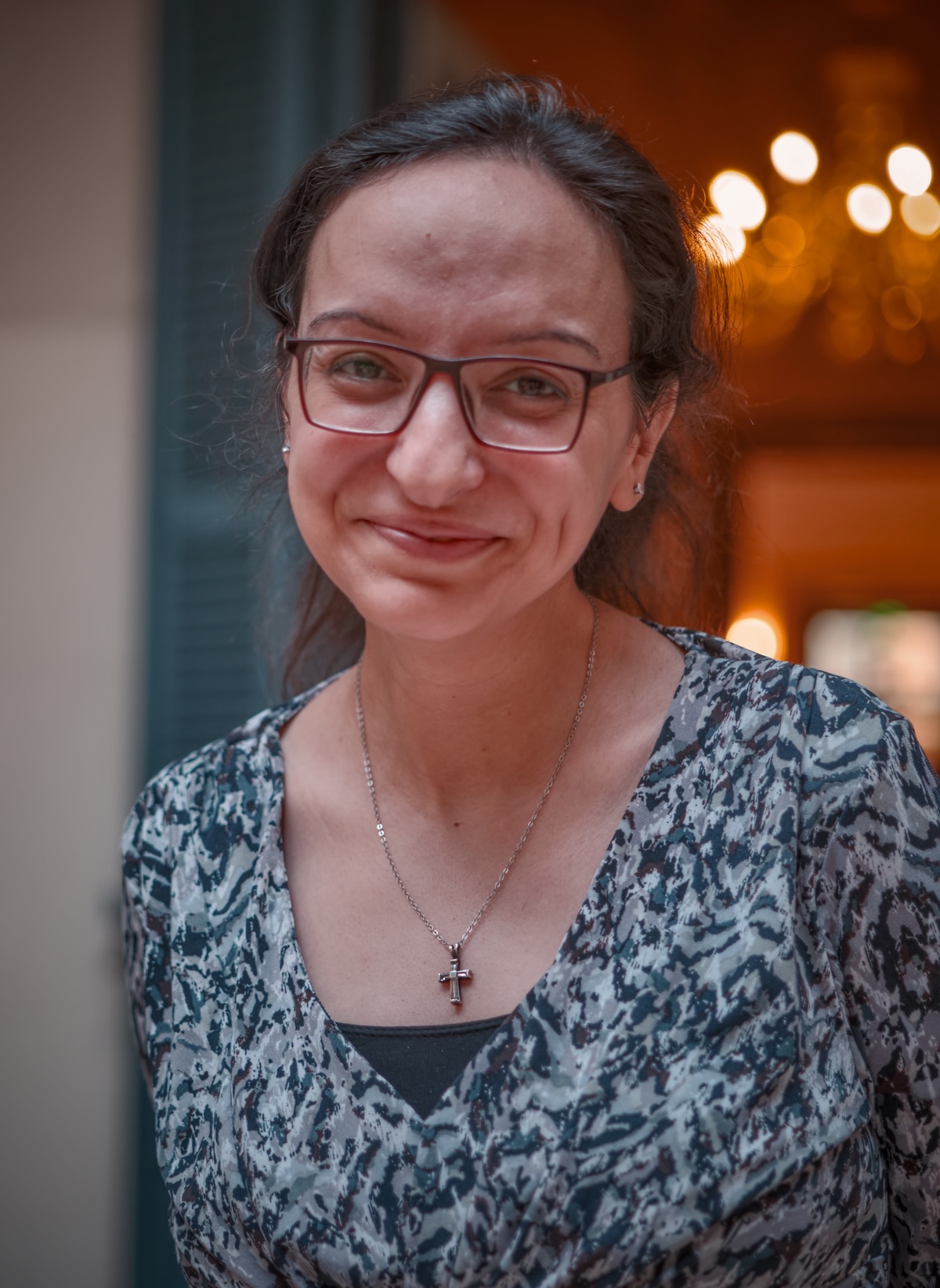
◼︎ Marianne Refeat |
La bibliothèque a connu d’importantes évolutions ces dernières années. Pouvez-vous nous en parler ?C’est vrai. La plus grande évolution à laquelle je pense est l’intégration de la bibliothèque de l’Ifao au catalogue collectif des bibliothèques universitaires françaises "SUDOC" en 2013. Depuis cette date, je joue un rôle de "correspondante catalogage" de l’Ifao. Avec l’équipe, nous assurons donc le lien avec cette base en saisissant les notices des ouvrages acquis par l’Ifao, signalant ainsi leur présence dans notre bibliothèque. Avec mes collègues, nous intégrons aussi au SUDOC plus de 1 000 ouvrages par an issus du fonds de la bibliothèque. Une autre évolution notable est celle de la migration de notre propre catalogue local, débutée en 2017. Après une longue réflexion et plusieurs essais, nous avons réussi à mettre en place le nouveau catalogue de la bibliothèque en 2024. Nous sommes passés du logiciel propriétaire Aleph (Ex Libris) au logiciel libre KOHA. Désormais adaptée à tous les types d’écran (ordinateurs, smartphones), la nouvelle interface offre aux utilisateurs des fonctionnalités personnalisées, intuitives et dynamiques : une interface déclinée en trois langues (français, arabe, anglais), plus accessible à tous, un outil de recherche performant et modernisé, permettant une recherche thématique, chronologique, ou par autorités (auteurs, sites archéologiques, sujets…) et une page de résultats simplifiée, esthétique et dynamique.
Le projet de nouvelle bibliothèque, qui est depuis longtemps évoqué, devient finalement une réalité. Comment le vivez-vous, et qu’apportera-t-il, selon vous, aux usagers comme à l’équipe ?Je ne reviens pas sur les nombreux défis organisationnels et sécuritaires posés par la bibliothèque actuelle, à laquelle nous sommes toutes et tous, évidemment, très attachés. Il est évident que toute l’équipe de la bibliothèque aurait préféré rester au cœur du palais. Nous sommes attachés à ces espaces... Toutefois, la nouvelle bibliothèque devrait représenter une solution pérenne. En outre, elle présente bien des atouts. Par exemple, elle devrait assurer l’expansion des fonds dans le futur, l’accueil d’un public plus nombreux, y compris des personnes à mobilité réduite, et l’installation de rayonnages plus accessibles et plus sécurisés. J'espère que ce projet tiendra toutes ses promesses.
|
||
|
ماريان رفعت، نائبة مديرة مكتبة المعهد الفرنسي للآثار الشرقية، على وشك أن تكمل عقدين من العمل في "قلب المعهد النابض" العام المقبل. إليكم هذا الحوار معها: ١. كيف بدأتِ العمل في المعهد، وما الذي دفعكِ إلى مجال المكتبات ؟بمجرد تخرجي من كلية الآداب من جامعة القاهرة في عام ٢٠٠٦، قبلت وظيفة في مكتبة ”أصدقاء الكتاب“، ولكن سرعان ما تقدمت بعد ٤٠ يومًا فقط إلى المعهد بعد أن رأيت إعلانًا في الجريدة. لم أكن أتوقع أن يتم اختياري لأنني لم أكن أملك أي خبرة في المكتبات، ولكنني فوجئت بأنني قد تم اختياري. كنتُ محظوظة جدًا لأنني بدأتُ العمل مع فانيسا ديسكلو كرئيسة للمكتبة. فهي التي رحبت بي ودربتني وعلمتني كل ما أعرفه عن كيفية عمل المكتبات الجامعية ومعاييرها. ثم عملت بعد ذلك تحت إشراف العديد من مديري المكتبات: فيليب شيفران، وأنييس ماكين، والآن أورور سيافاتي، وكل منهم نقل إليّ مهارات جديدة. تم زيادة عدد فريق العمل أيضًا منذ ذلك الحين: لم يكن هناك سوى اثنين من أمناء المكتبات عندما انضممت إلى المعهد، وهناك الآن خمسة موظفين دائمين بالإضافة إلى المتدربين الذين يخففون عبء العمل أثناء التدريب. جذبني العمل في المكتبة منذ اللحظة التي وطأت فيها قدماي مكتبة المعهد. لذا قررت أن أجعلها مهنتي. ومن أجل التأقلم مع الوظيفة وتطوير مهاراتي وصقلها، التحقتُ بالعديد من البرامج والدورات التدريبية، لا سيما في مكتبة الإسكندرية وجامعة القاهرة وجامعة سنجور. ونتيجة لذلك، حصلت على دبلوم في إدارة المكتبات في عام ٢١٤، ودبلوم في علوم المعلومات والمكتبات في عام ٢٠٢٣. ٢. شهدت المكتبة تطورات كبيرة في السنوات الأخيرة. هل يمكن أن تحدثينا عنها؟هذا صحيح. وأكبر ما يمكنني التفكير فيه هو ضم مكتبة المعهد إلى فهرس اتحاد مكتبات الجامعات الفرنسية في عام ٢٠١٣. ومنذ ذلك الحين، كنت مراسلة الفهرسة لمكتبة المعهد. ونقوم مع فريق العمل بالربط مع قاعدة البيانات هذه عن طريق إدخال سجلات المؤلفات التي تقتنيها مكتبة المعهد مع الإشارة إلى وجودها في مكتبتنا. ونقوم أنا وزملائي أيضًا بفهرسة أكثر من ١٠٠٠ عمل سنويًا من مقتنيات المكتبة. إن التطور المهم الثاني هو الفهرس الإلكتروني جديد، وهو مشروع بدأ التفكير فيه عام ٢٠١٧، وبعد تجارب متعددة وتخطيط طويل، أطلقنا الفهرس الجديد في عام ٢٠٢٤: ولقد انتقلنا فيه من نظام Aleph (Ex Libris) إلى نظام مفتوح المصدر يُدعى KOHA. ٣. مشروع المكتبة الجديدة الذي طال انتظاره في طريقه إلى التنفيذ الآن. ما هو انطباعكِ عنه؟ وكيف سيؤثر على المستخدمين والفريق؟لن أتحدث كثيرا عن التحديات التنظيمية والأمنية التي تطرحها علينا المكتبة الحالية، التي نتمسك بها جميعا بطبيعة الحال، حيث أننا كفريق نرتبط عاطفيًا بهذه المساحة داخل قصر المنيرة، حيث نشعر بأننا جزء من هذا المكان. لكن على الصعيد الآخر، فإن المكتبة الجديدة تتمتع بالعديد من المزايا، حيث ستسمح بتوسعة المجموعات، واستقبال عدد أكبر من الباحثين، وتوفير تجهيزات ملائمة لأصحاب الإعاقات الحركية. كما ستحتوي على أرفف بمستويات آمنة وسهلة الاستخدام. |
||
Le carnet de l'Ifao
Arrivé- Christelle André a pris ses fonctions comme agent comptable de l'Ifao en mars 2025, en remplacement d'Omar Nedjar.- استلمت كريستيل أندريه منصبها كمسؤولة محاسبة في المعهد في مارس ٢٠٢٥.
|
|
Départs- Joachim Le Bomin, archéologue et responsable du pôle Archéologie, a quitté l'Ifao fin septembre 2025 à la fin de son contrat. - Axelle Brémont-Bellini a achevé son mandat de membre scientifique de l'Ifao le 31 août 2025. - غادر جواكيم لوبومان، رئيس قسم الآثار المعهد في يوليو ٢٠٢٥ بعد انتهاء عقده. - انهت أكسيل بريمون بيليني، العضو العلمي في المعهد، فترتها في يوليو ٢٠٠٥. |
|
Manifestations scientifiques
 |
Cycle de conférences : Les conférences de l'Ifao |
|
|
|
|
Séminaire de recherche de l'Ifao |
|
|
|
|
Cycle de conférences : Égyptologie bi-l-ʿarabīOrganisé en partenariat avec "Al-Makân wa-l-Nâs" |
|
|
|
|
Exploring Egypt Seminar: Histories and HistoriographiesEn partenariat avec DAIK, NVIC, CAI, PCMA |
|
|
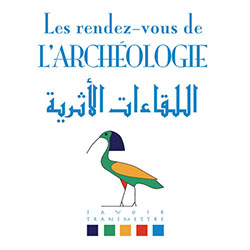 |
Les rendez-vous de l’archéologieEn partenariat avec l’IFE |
|
|
|
|
Les Séminaires Riwaq |
|
|
Formations
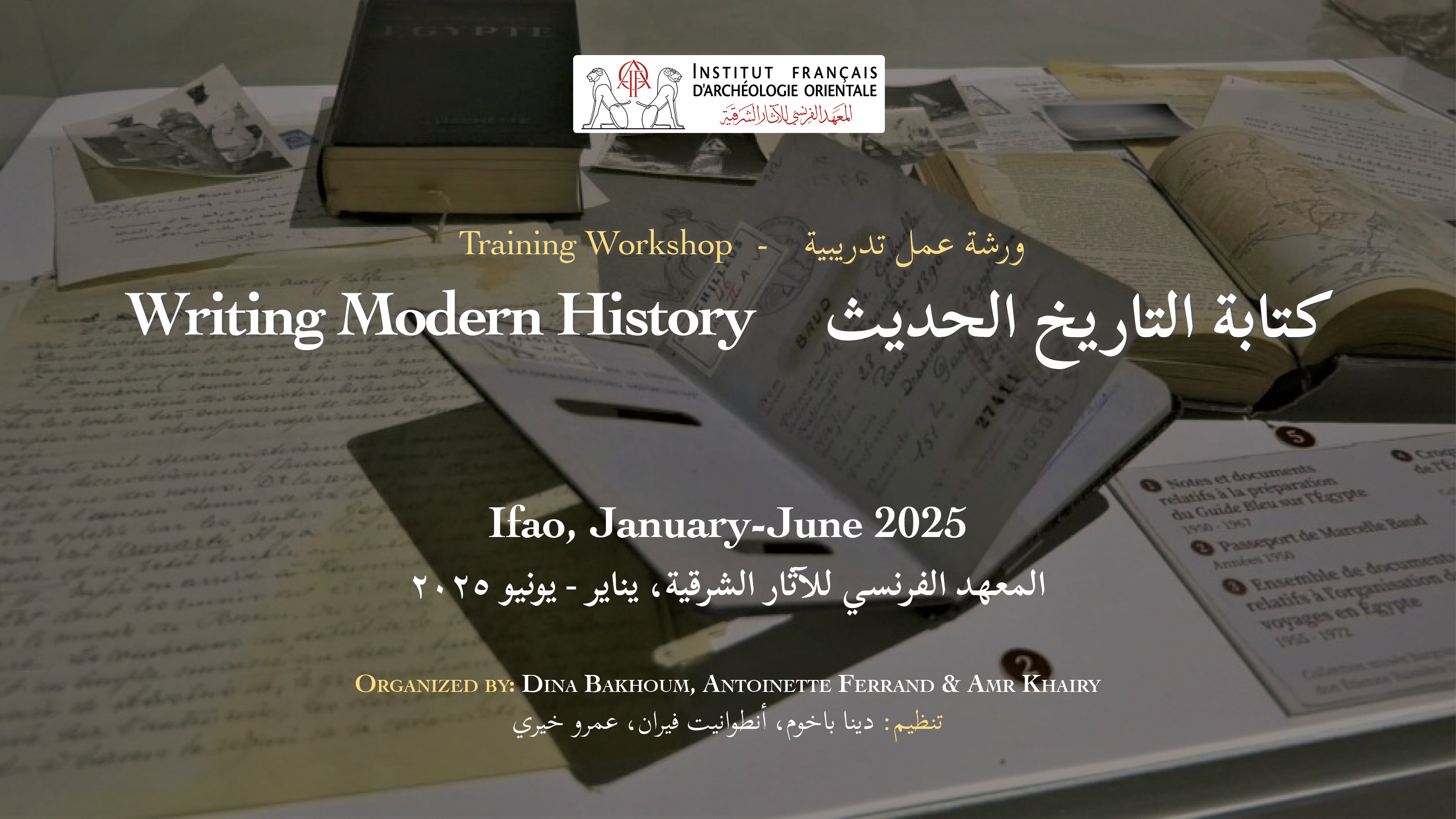 |
Le 15 janvier 2025, Formation par Dina Bakhoum, Antoinette Ferrand & Amr Khairy: Writing Modern History [en savoir plus] |
|
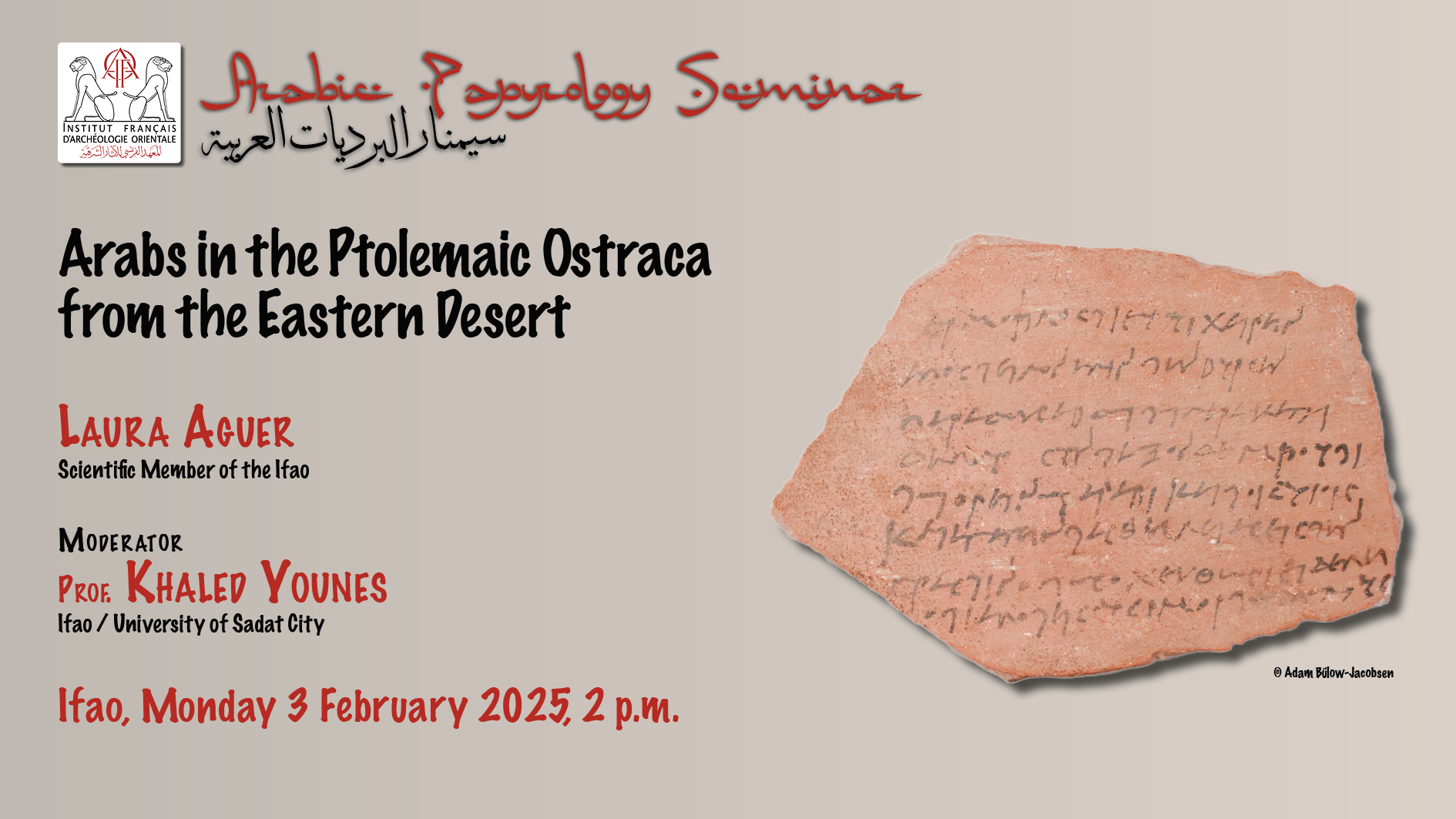 |
Le 3 février 2025, par Laura Aguer : Arabs in the Ptolemaic Ostraca from the Eastern Desert [en savoir plus] |
|
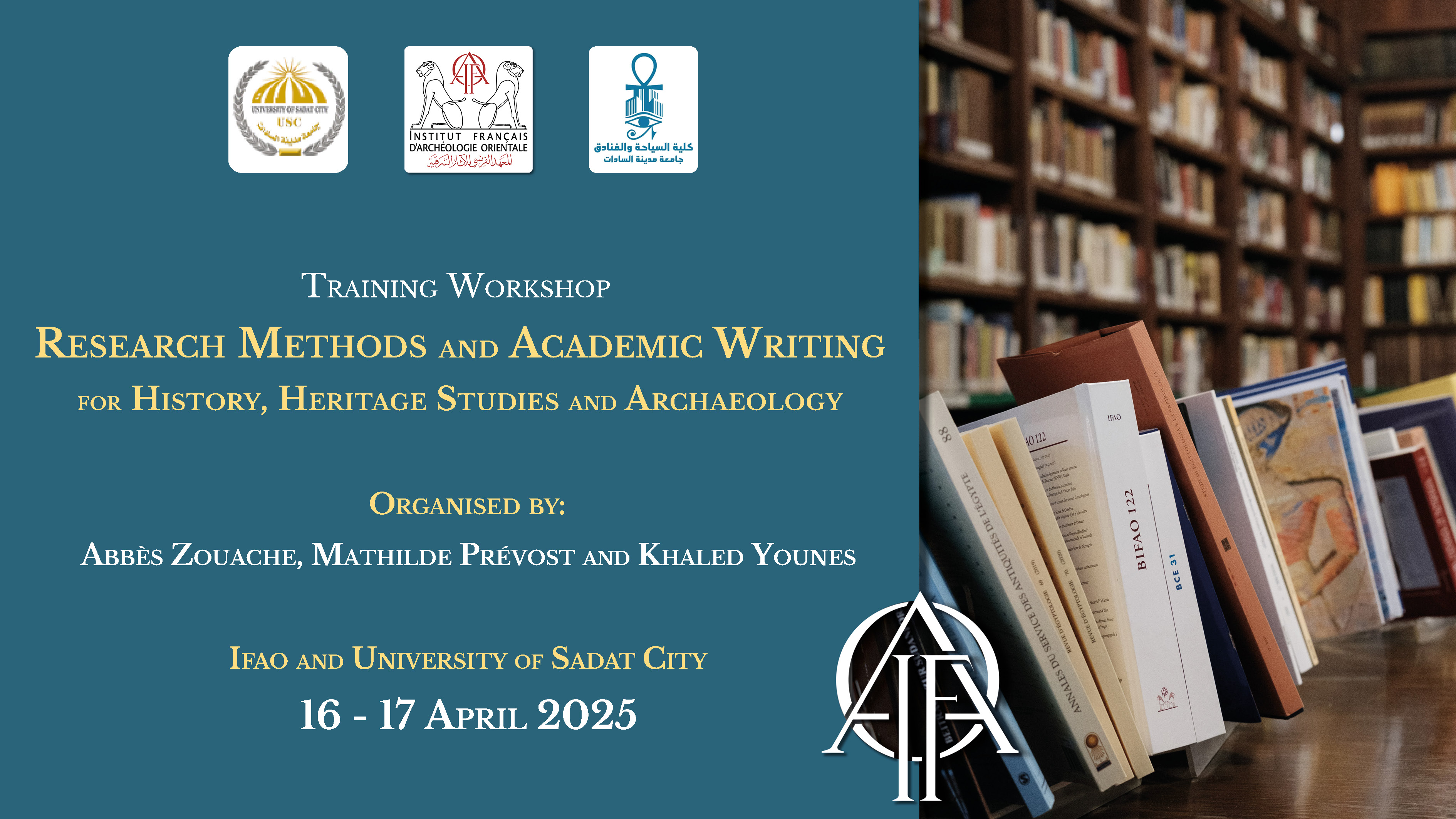 |
Du 16 au 17 avril 2025, Formation par Abbès Zouache, Mathilde Prévost and Khaled Younes: Research Methods and Academic Writing, en partenariat avec le Faculty of Tourism and Hotels, University of Sadat City [en savoir plus] |
|
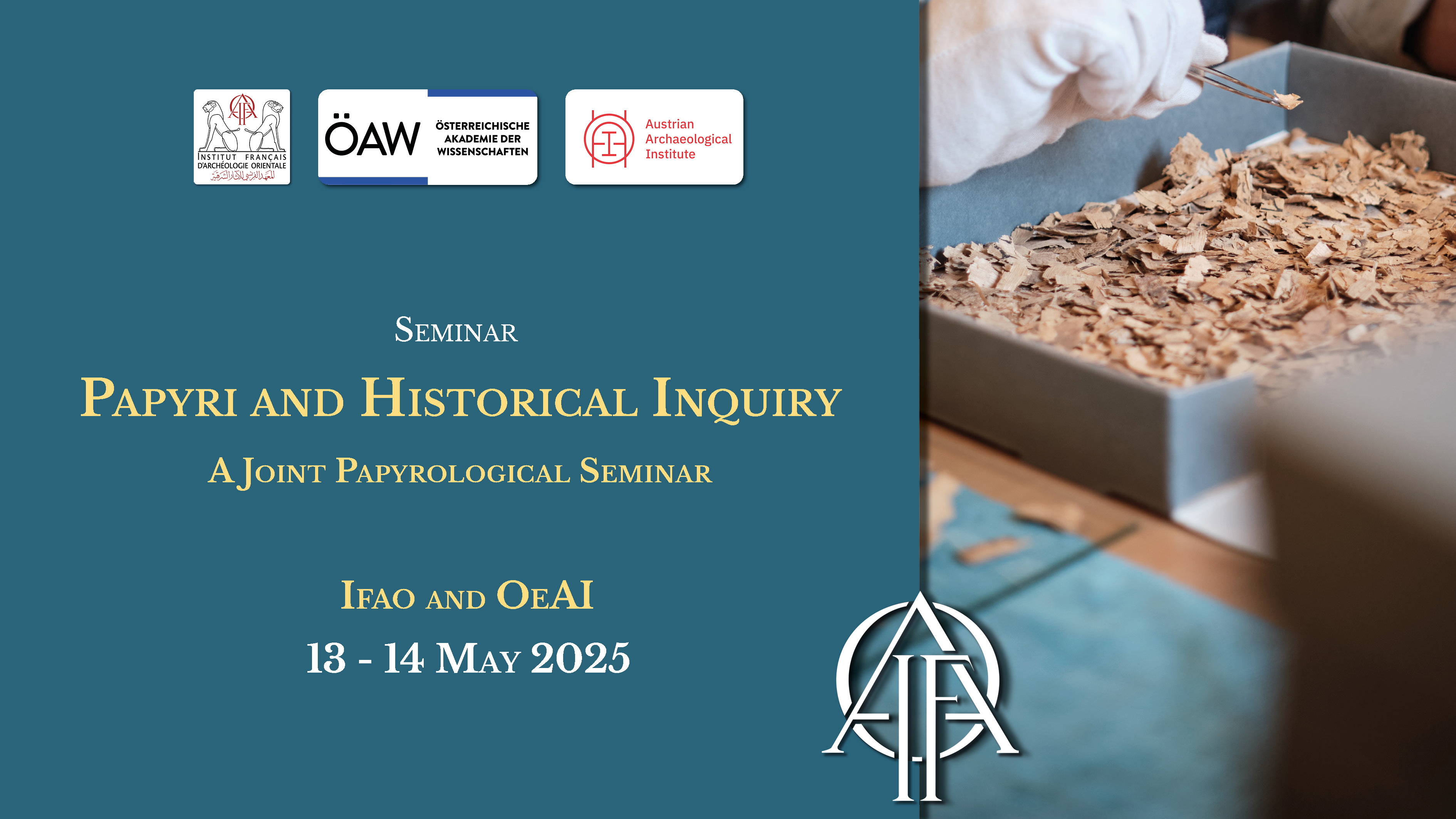 |
Du 13 au 14 mai 2025, Journée d’étude par : Papyri and Historical Inquiry, en partenariat avec l’Austrian Archaeological Institute in Cairo (OeAI) [en savoir plus] |
Exposition
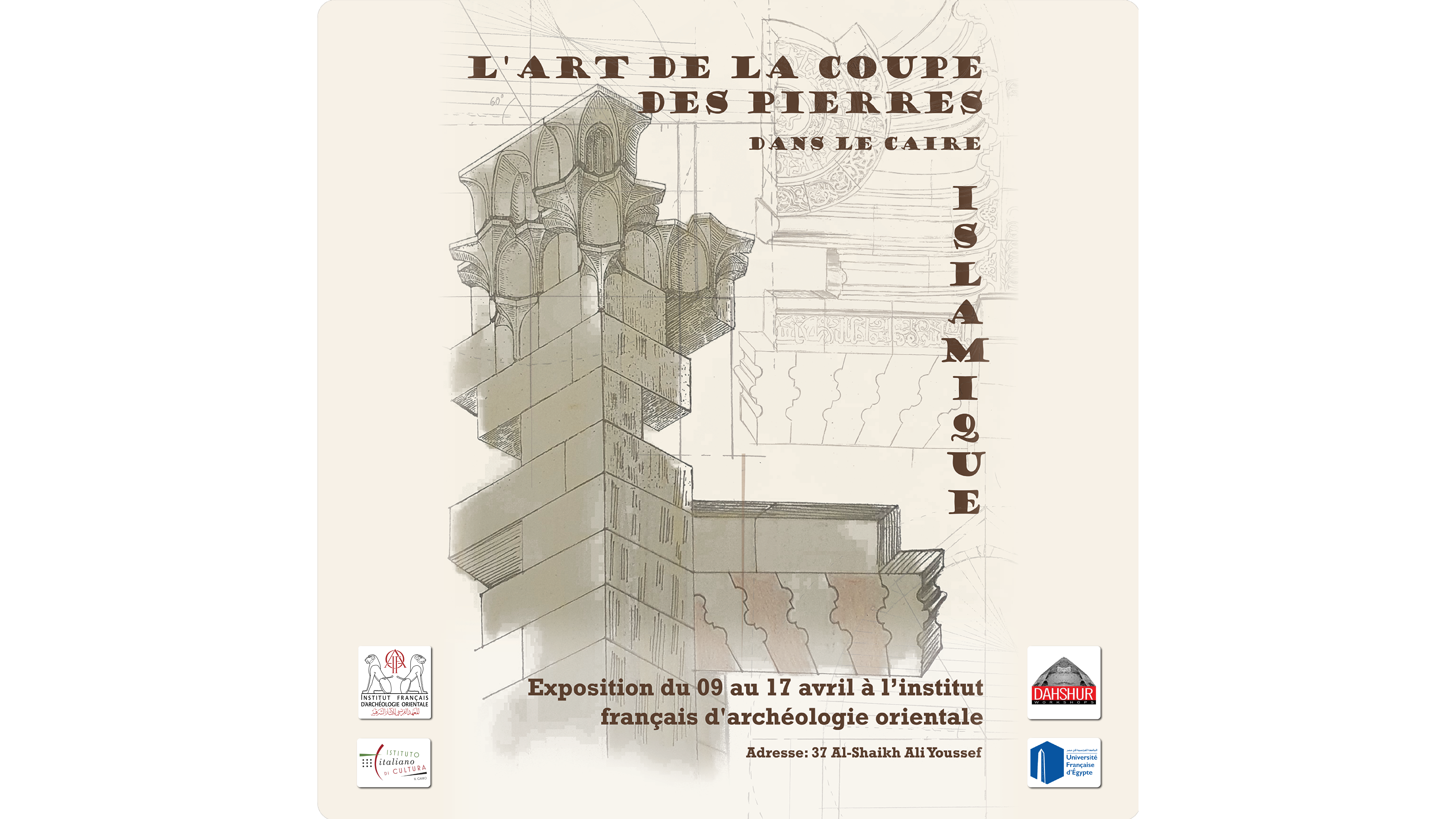 |
Du 9 au 17 avril 2025, Exposition par Philippe Bastide: L’art de la coupe des pierres dans le caire islamique, en partenariat avec l’Université Française d’Égypte, Centro Archeologico dell'Istituto Italiano di Cultura- Il Cairo, Dahshoureya Residence [en savoir plus] | |
 |
Du 12 juin au 12 juillet 2025, Exposition par Julien Auber de Lapierre, Gersande Eschenbrenner Diemer & Kawkab Tawfik: Beyond the Tree, en partenariat avec le Medjehu Project, ASWAT [en savoir plus] |
Rencontres scientifiques
 |
Le 8 avril 2025, Colloque international organisé par : Rencontres en Archéométrie 2025, en partenariat avec le MoTA & LMC14-LSCE [en savoir plus] | |
|
|
Du 15 au 16 avril 2025, Séminaire organisé par Dr Ahmed Mansour & prof. Abbès Zouache: المستشرقون ونشأة علم دراسة النقوش العربية منذ القرن التاسع عشر حتى بداية القرن العشرين, en partenariat avec le Bibliotheca Alexandrina [en savoir plus] | |
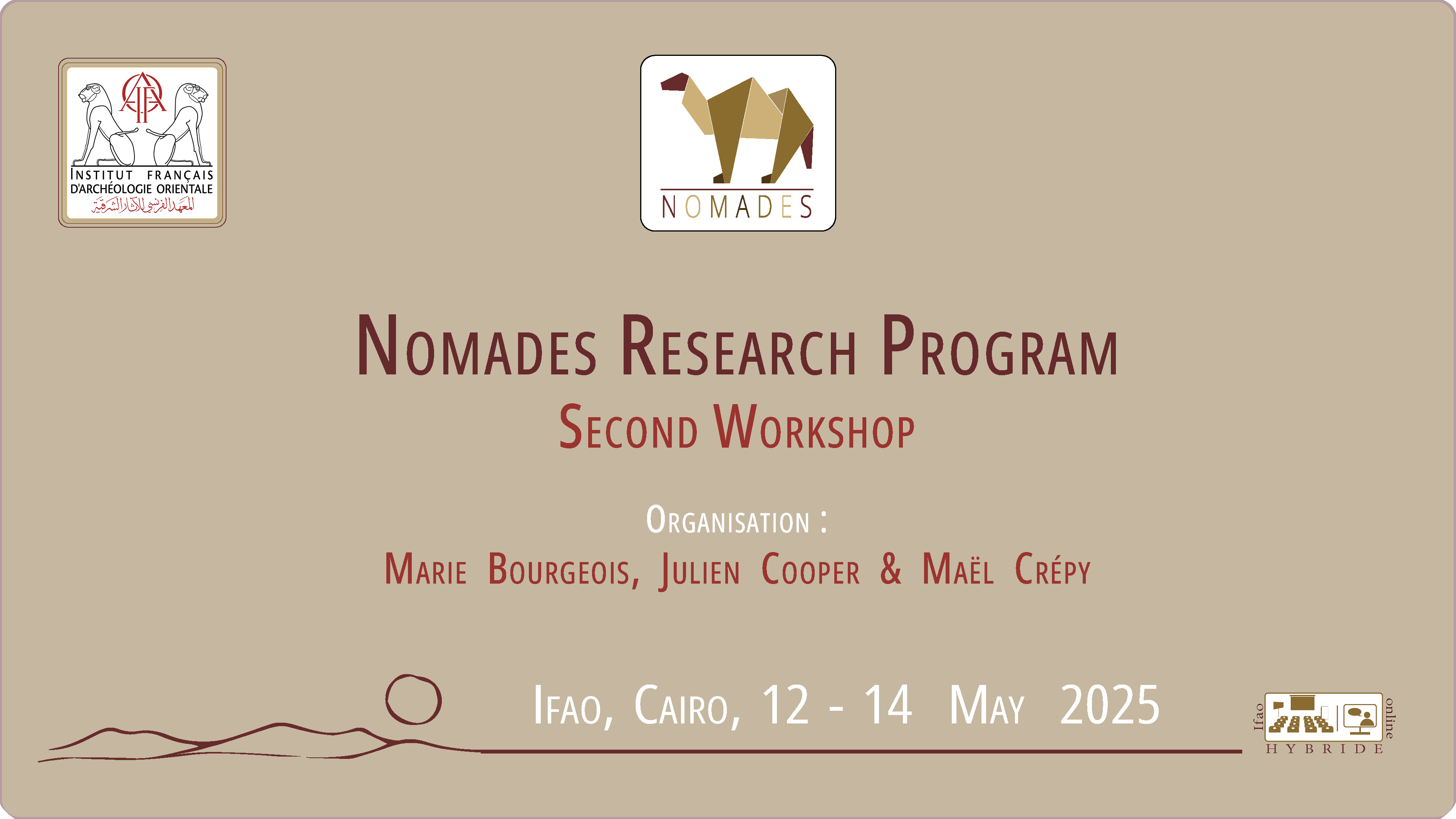 |
Du 12 au 14 mai 2025, Atelier de recherche par Marie Bourgeois, Julien Cooper, Maël Crépy: NOMADES programme second workshop [en savoir plus] |
|
 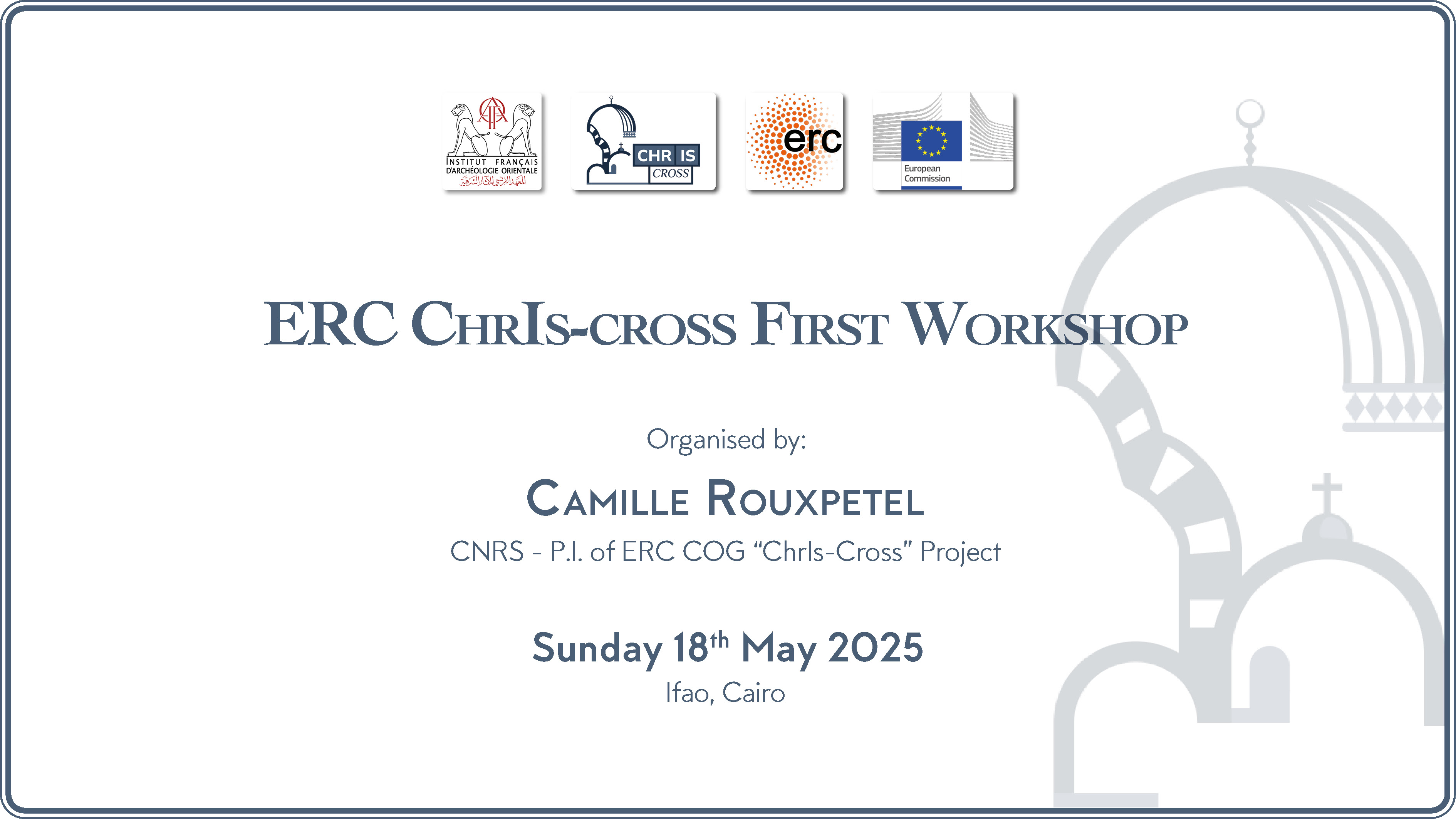 |
Le 18 mai 2025, Atelier de recherche par Camille Rouxpetel: ERC ChrIs-cross First Workshop [en savoir plus] |
|
 |
Le 12 juin 2025, Journée d’étude par Gersande Eschenbrenner Diemer, Kawkab Tawfik & Sibylle Emerit: Beyond the Tree, en partenariat avec le Medjehu Project (University of Jaén/University of Lisbon) -EBENES (Ifao) /ASWAT (Cedej/Ifao)/ Paysages sonores (Ifao, EfA, HiSoMA-CNRS, univ. Lyon 2) - projet RIMAnt [en savoir plus] | |
|
|
Le 29 avril 2025, Séminaire organisé par أ.د/ أحمــد الشربينـــي، أ.د/عباس زواش، د/ رحـاب إبـراهيـم الصعيدى : سيمنار حوار المدن, en partenariat avec le الجمعية المصرية للدراسات التاريخية [en savoir plus] | |
|
|
Du 18 au 19 juin 2025, Les académies de l'Ifao pour jeunes chercheurs par أ.د.أحمد الشوكي و أ.د. عباس زواش: دراسات العصر العثماني، العمارة والفنون - الملتقى العلمي الخامس لشباب الباحثين - أكاديمية رواق, en partenariat avec le Faculty of Archaeology, Aïn Sham University [en savoir plus] |
Sur la chaîne Youtube de l'Ifao
Publications
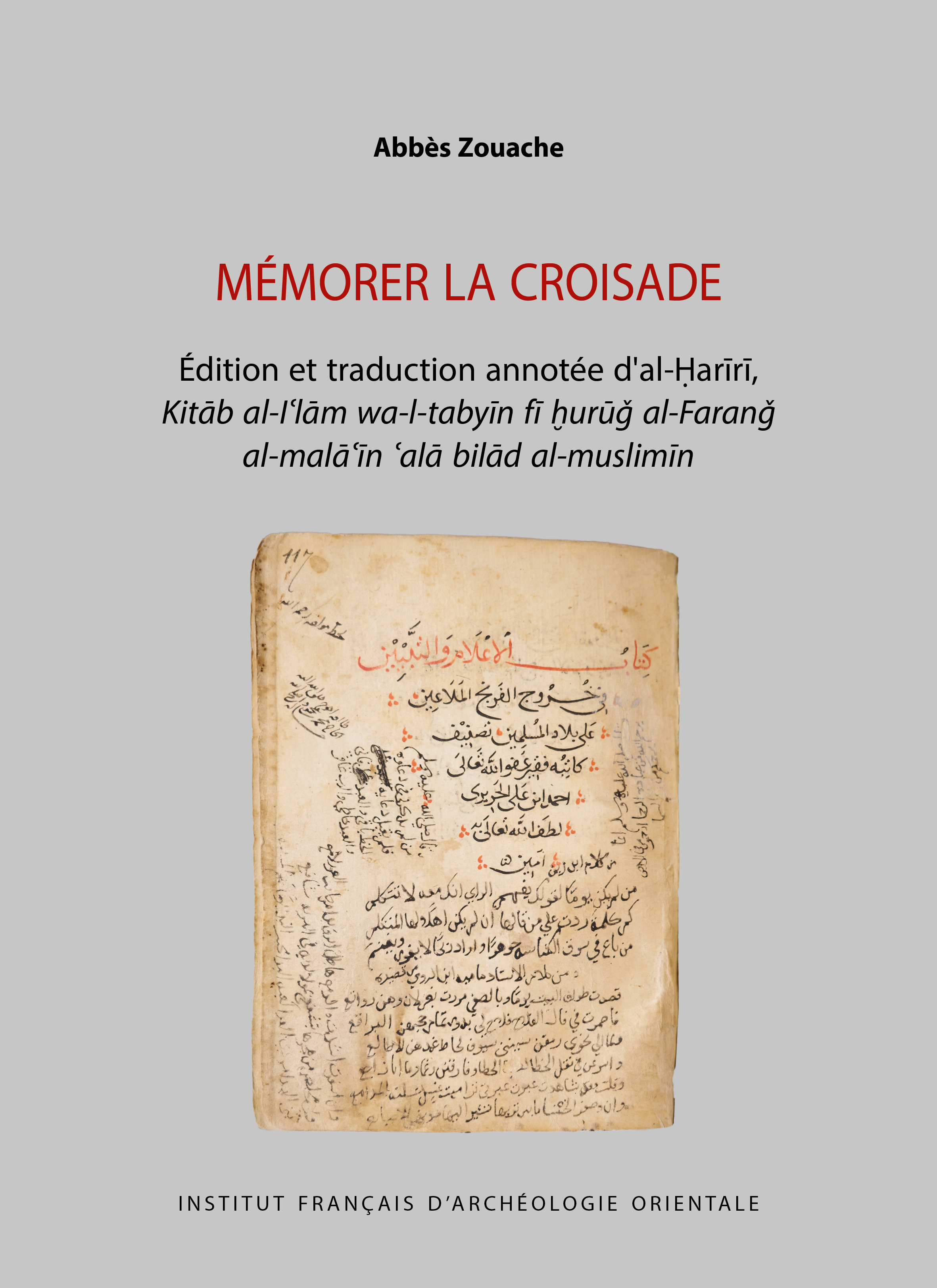
Abbès Zouache
Mémorer la croisade Édition et traduction annotée d’al-Ḥarīrī, Kitāb al-Iʿlām wa-l-tabyīn fī ḫurūǧ al-Faranǧ al-malāʿīn ʿalā bilād al-muslimīn TAEI 64; 210 p. Le Kitāb al-Iꜥlām wa-tabyīn fī ḫurūǧ al-Faranǧ al-malāꜥīn ꜥalā bilād al-muslimīn est rédigé, au début du xe/xvie siècle, par un historien inconnu, Aḥmad b. ꜥAlī al-Ḥarīrī, qui vivait probablement dans les montagnes libanaises proches de Damas. Abbès Zouache propose une édition critique et une traduction en français de ce texte, qui montre que plusieurs siècles encore après la conquête par les Mamelouks de … [en savoir plus] 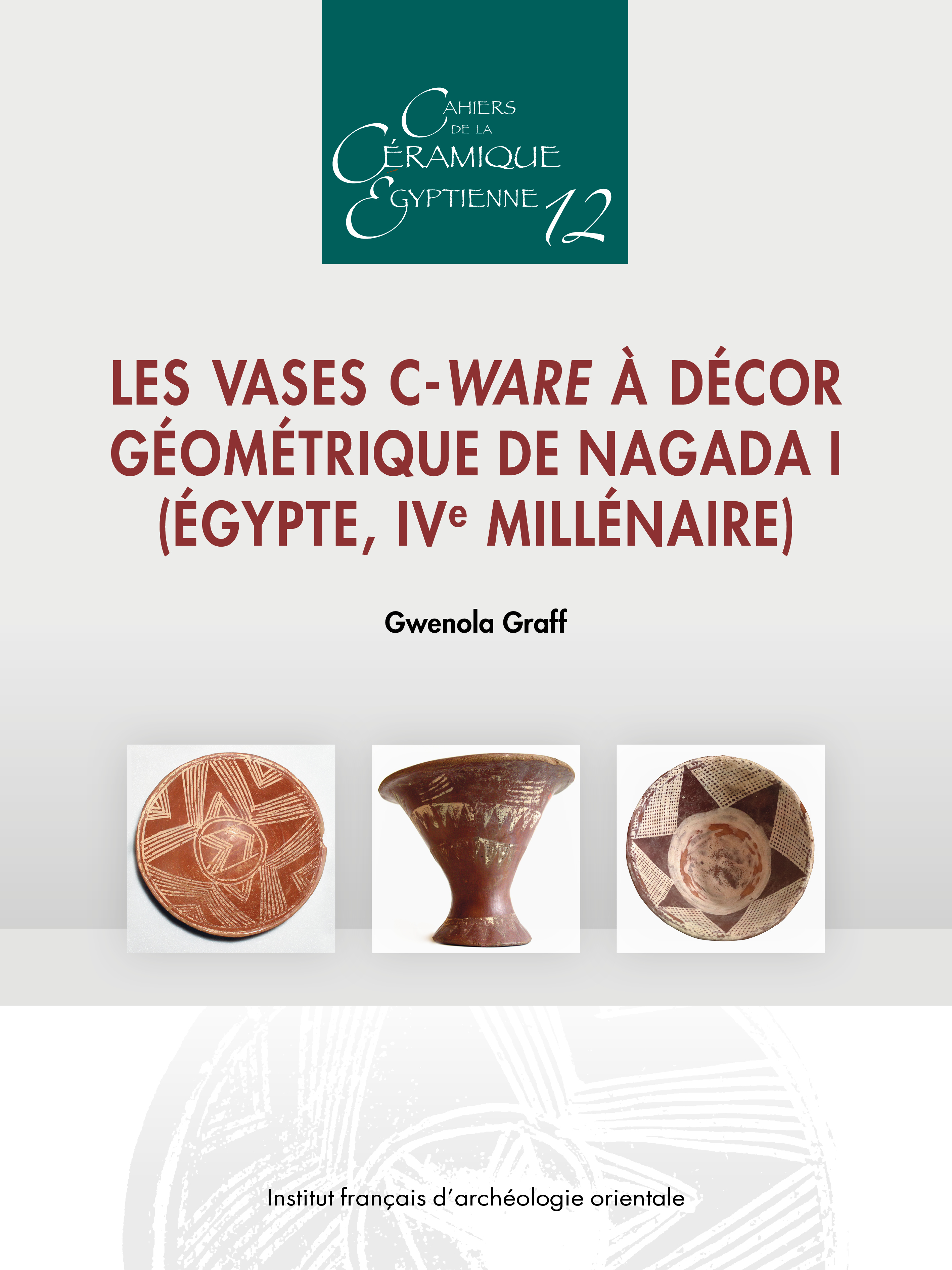
Gwenola Graff
Les vases C-Ware à décor géométrique de Nagada I (Égypte, IVe millénaire) CCE 12; 226 p. Les images laissées sur différents supports par la culture prépharaonique de Nagada, en Égypte, au IVe millénaire, sont abondantes et de belle qualité. Pour autant, leur compréhension et leur interprétation ne sont pas toujours aisées. Les coupes et les vases de Nagada I (3900-3700 av. J.-C.) auxquels cette étude est consacrée sont de couleur rouge sombre et portent un décor peint en blanc, composé uniquement de formes géométriques simples. Depuis longtemps, ces … [en savoir plus] 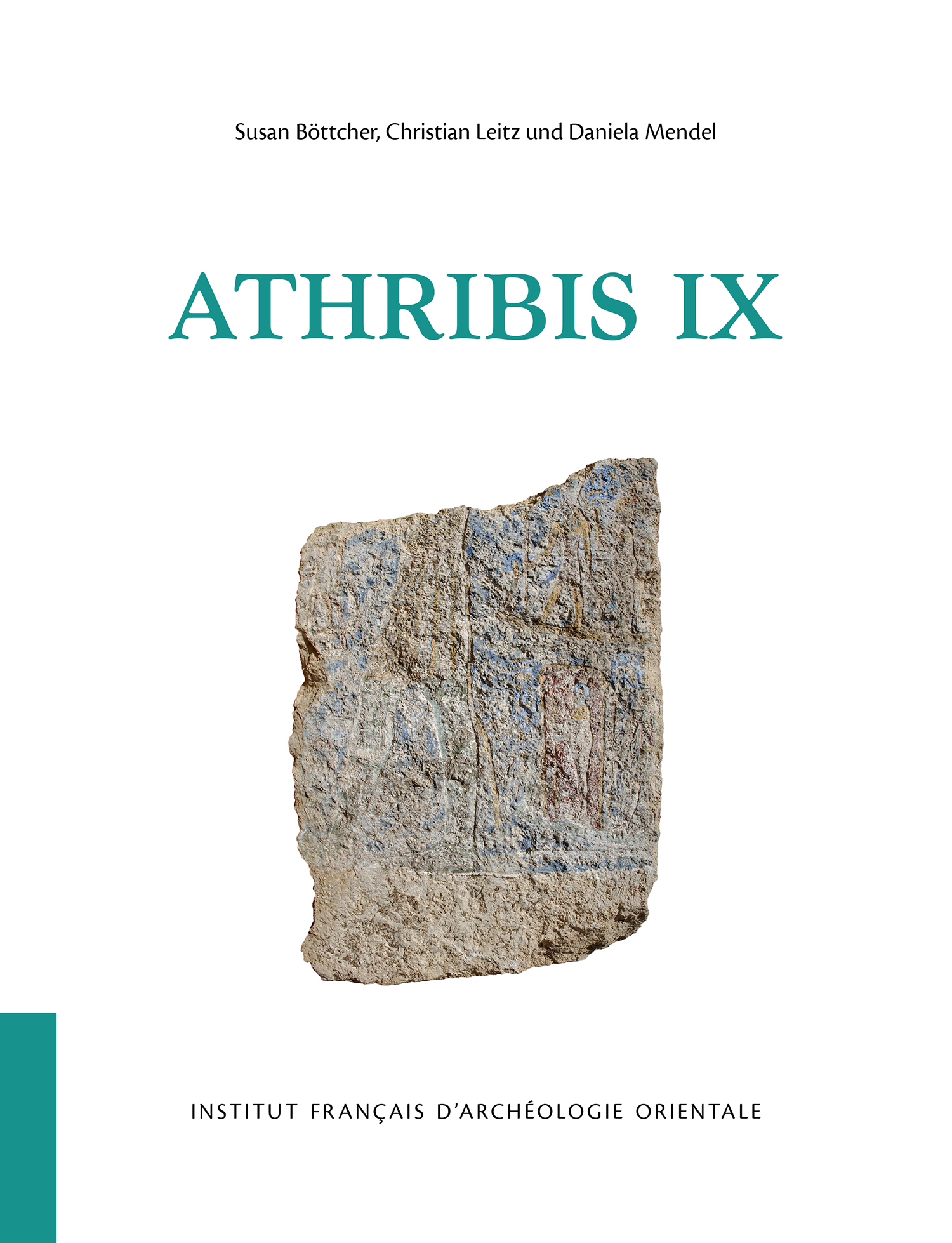
Susan Böttcher, Christian Leitz, Daniela Mendel
Athribis IX Die Fassade, der Pronaos, der Querraum und die dekorierten Blöcke und Fragmente des Tempels Ptolemaios XII Temples, Athribis 9; 524 p. Le présent ouvrage contient les textes et reliefs de la salle A (pronaos) et B et tous les blocs décorés, qui ont été trouvés pendant le dégagement du temple. Tous les textes présentés dans ce volume étaient jusqu’à présent inédits. La publication de tous les textes du temple de Ptolémée XII est à présent complète. [en savoir plus]
Sylvie Marchand (éd.)
Bulletin de liaison de la céramique égyptienne 33 BCE 33; 252 p. Cette nouvelle livraison du Bulletin de liaison de la céramique égyptienne (BCE 33) présente dans une première partie son « Parcours régional ». Il s’enrichit cette année encore de l’apport de travaux archéologiques majeurs. Le premier article concerne l’étude d’un ensemble de petites jarres domestiques peintes datées du Moyen Empire provenant du site d’Ayn Soukhna (Bats). Le second présente un assemblage de vases céramiques, égyptiens et importés, et de vases en pierre … [en savoir plus] 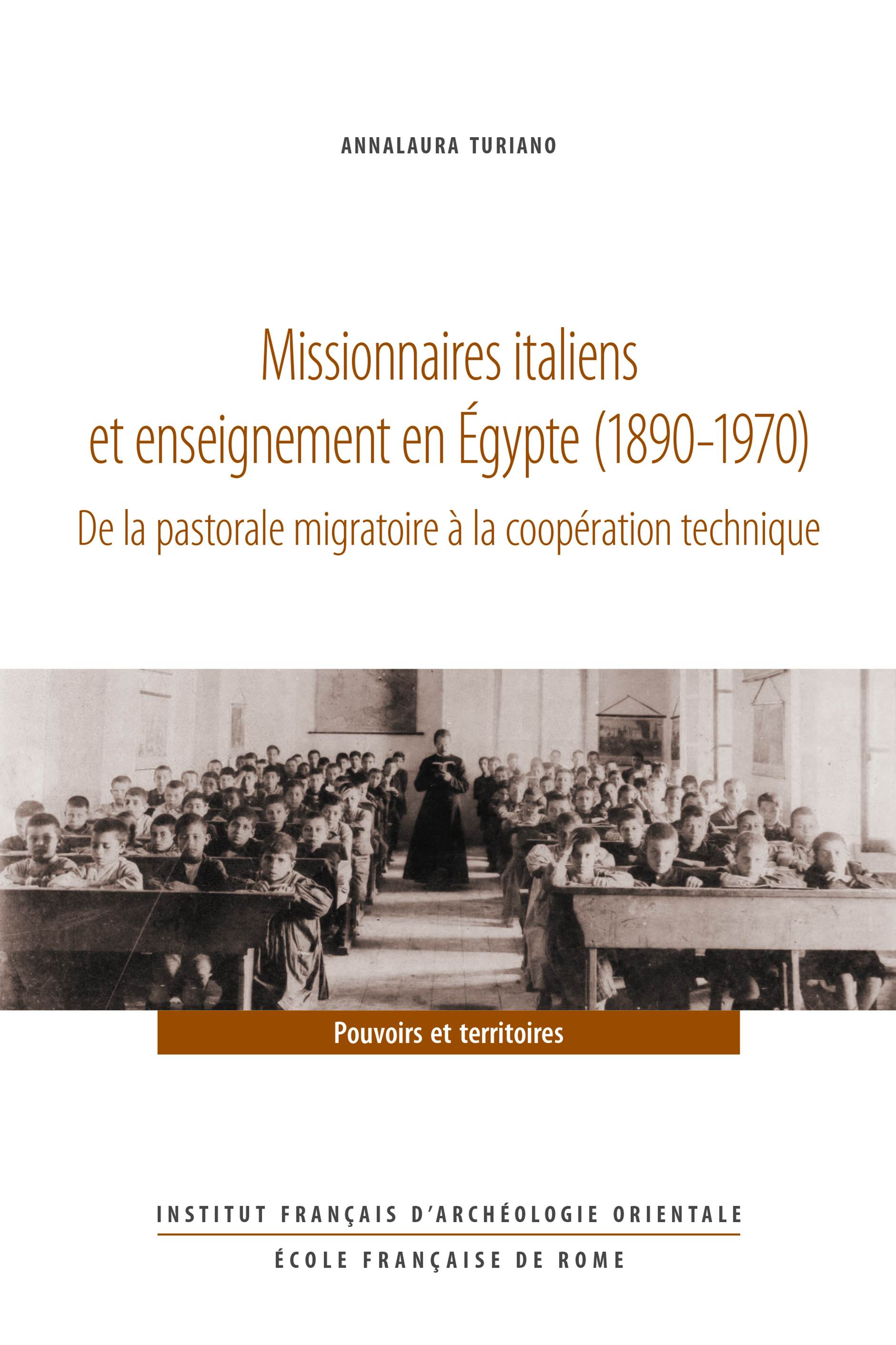
Annalaura Turiano
Missionnaires italiens et enseignement en Égypte (1890-1970) De la pastorale migratoire à la coopération technique RAPH 49; 470 p. En prenant pour objet la mission salésienne en Égypte, le présent ouvrage ajoute une dimension italienne aux études sur le phénomène missionnaire chrétien au Proche-Orient et s’intéresse à un secteur éducatif peu connu : l’enseignement professionnel. S’appuyant sur des archives inédites en plusieurs langues et de nombreuses enquêtes orales, l’auteure examine un siècle de présence missionnaire salésienne, retrace les parcours de plusieurs … [en savoir plus] 
Mehdi Berriah (éd.), Abbès Zouache (éd.)
The Medieval Jihad Texts, Theories, and Practices RAPH 50; 236 p. Loin d’être une simple réaction de l’islam à la croisade ou d’être une idéologie monolithique déclinant un droit de la guerre imposant des normes de comportement à l’ensemble des acteurs sociaux, le jihad est un phénomène revêtant de multiples dimensions : religieuse, jurisprudentielle, idéologique, militaire, politique, économique, sociale, culturelle et littéraire. C’est à ces multiples dimensions que les auteurs de cet ouvrage ont été invités à réfléchir, sans … [en savoir plus] 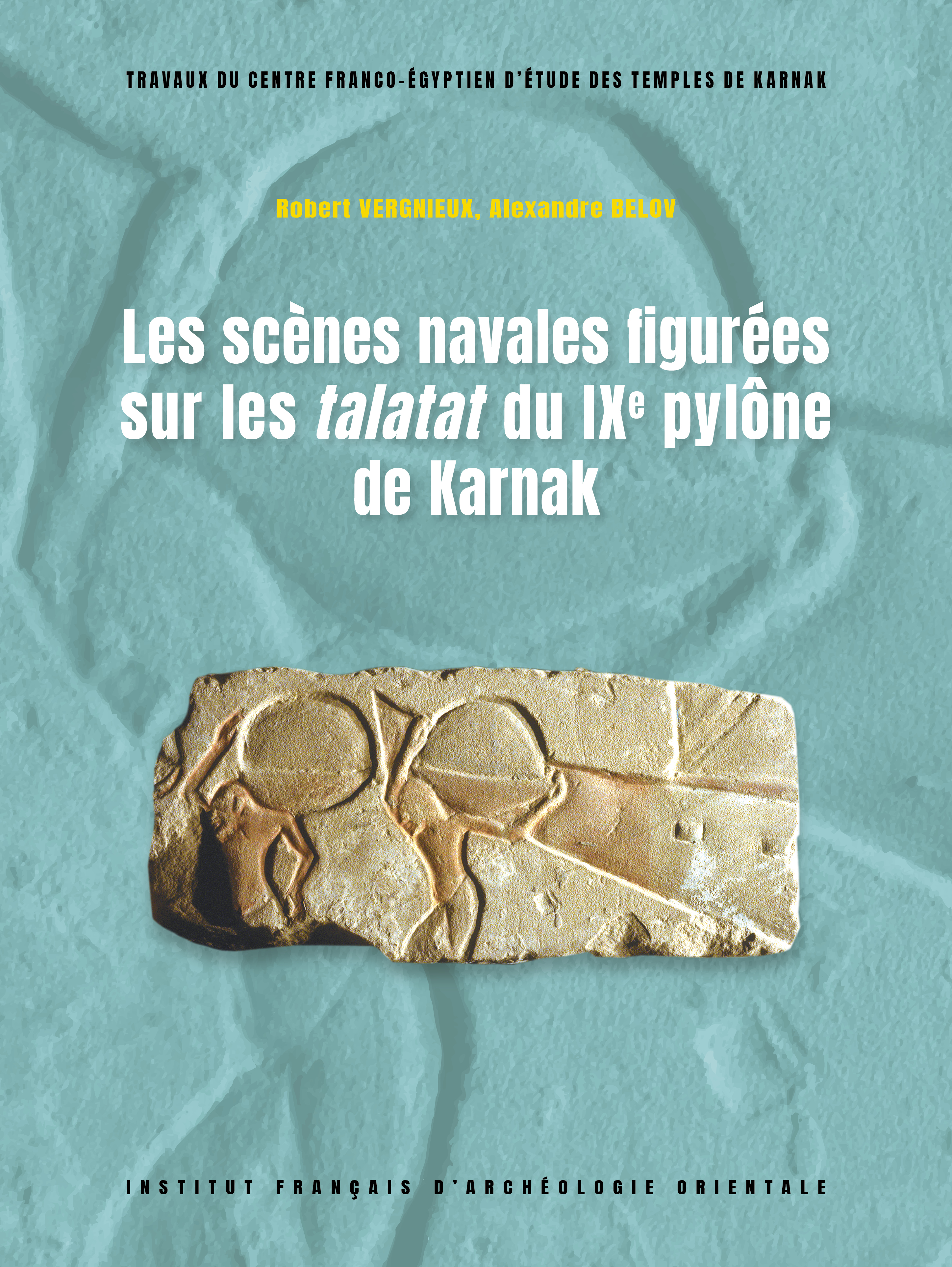
Robert Vergnieux, Alexandre Belov
Les scènes navales figurées sur les talatat du IXe pylône de Karnak BiGen 77; 220 p. Les talatat issues du môle ouest du IXe pylône de Karnak constituent un riche matériel documentaire sur le plan iconographique. Une fois assemblées, les talatat révèlent des fragments ou des pans de paroi, dont certains sont ornés de scènes navales d'une grande précision (bloqueurs, taquets, cadres, etc.). À chaque assemblage édité, c’est une fenêtre de compréhension qui s’ouvre sur la période inaugurée par l’avènement … [en savoir plus] 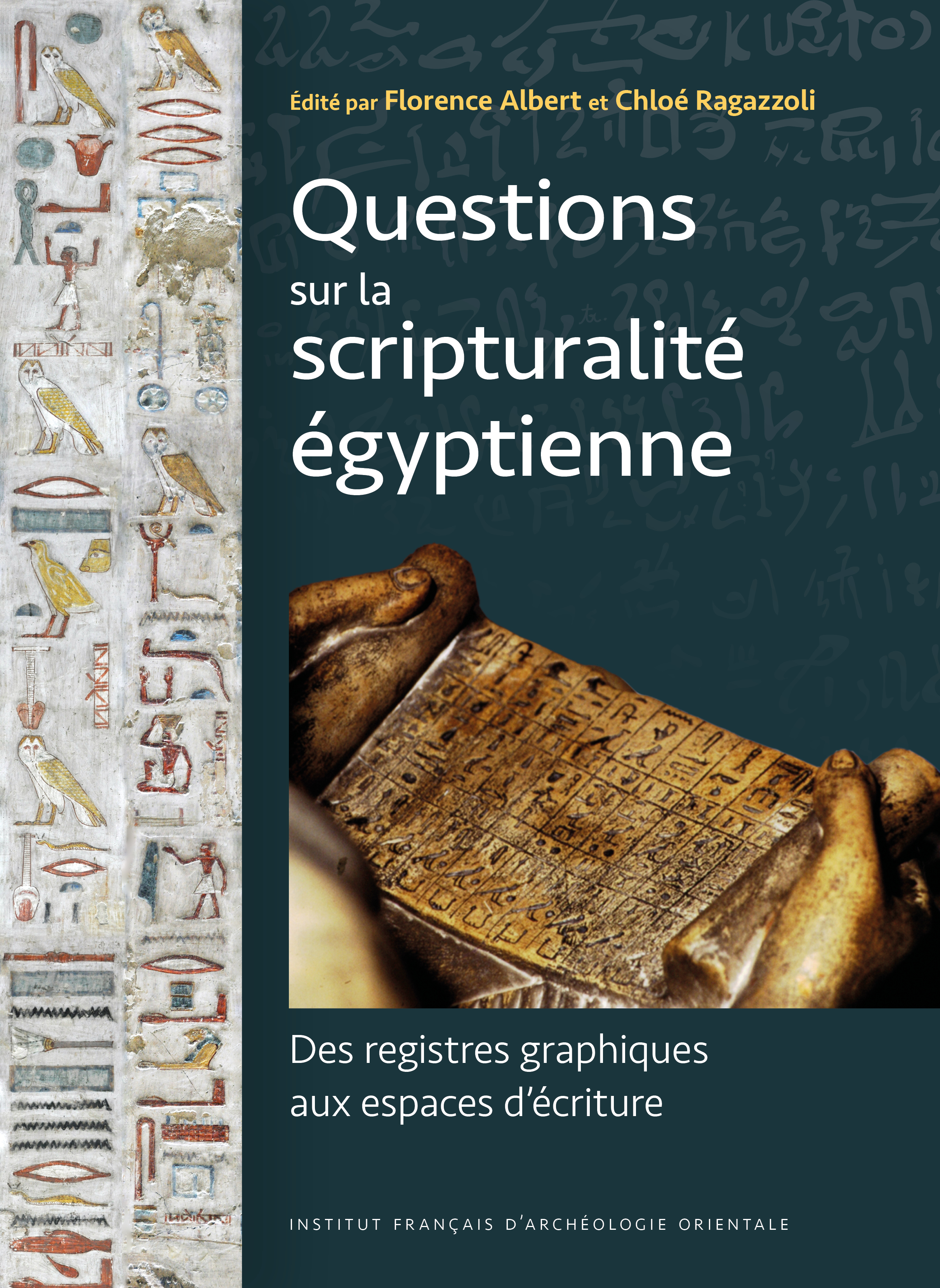
Florence Albert (éd.), Chloé Ragazzoli (éd.)
Questions sur la scripturalité égyptienne Des registres graphiques aux espaces d’écriture BiEtud 192; 520 p. Texte, écritures, livre, qu’ils soient de pierre ou de papyrus, sont des objets culturels dont les définitions, souvent implicites, varient dans le temps et l’espace. Leur articulation révèle des régimes d’écriture où les notions d’auteur, d’œuvre et de scripteur prennent des sens particuliers : les historiciser ouvre de nouvelles perspectives sur la portée, la production, et l'usage des textes. Ce volume présente les … [en savoir plus] 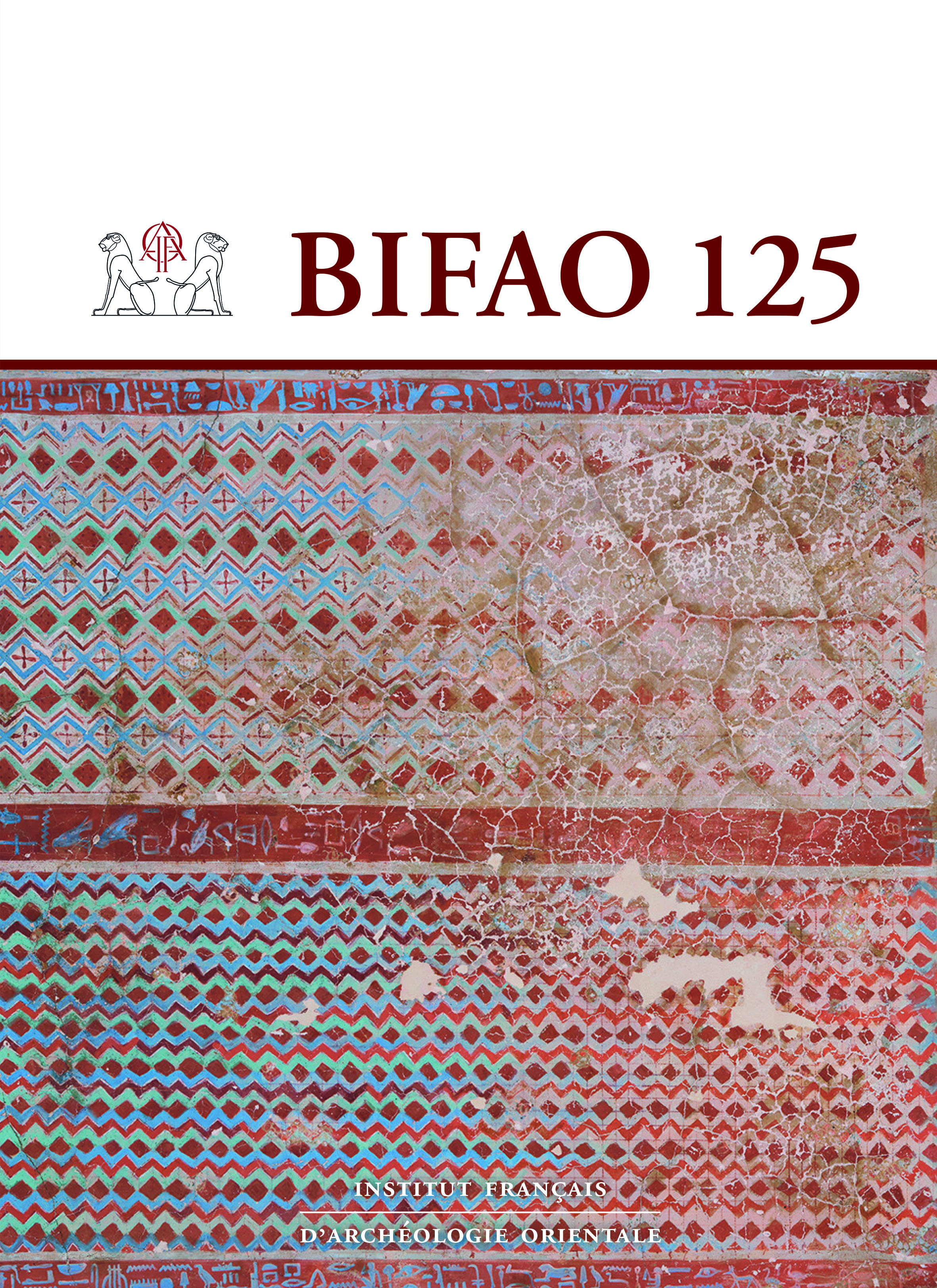
BIFAO 125 BIFAO 125; 592 p. Le Bulletin de l’Institut français d’archéologie orientale (BIFAO) couvre l’ensemble des champs de l’égyptologie depuis sa première publication en 1901. Les études qui y paraissent, dont l’aire chronologique s’étend de l’Égypte prédynastique jusqu’à l’époque byzantine, illustrent l’état des recherches actuelles dans les domaines de l’archéologie, l’épigraphie, la lexicographie, l’histoire de l’art, la religion et la philologie … [en savoir plus] 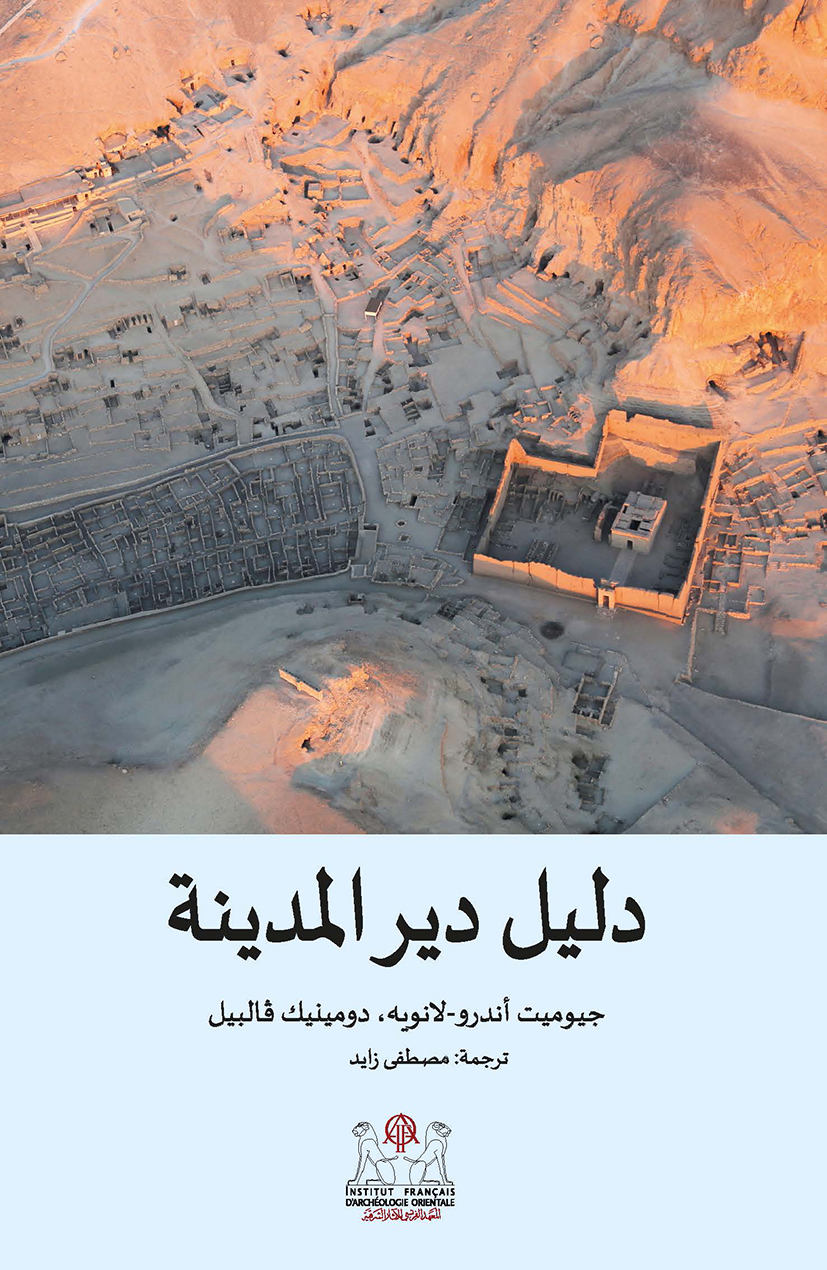
Guillemette Andreu-Lanoë, Dominique Valbelle
دليل دير المدينة GIFAO 5; 178 p. Le site de Deir el-Médina est unique : ses vestiges archéologiques, particulièrement bien préservés, forment un ensemble exceptionnel en Égypte (constitué d’un village, d’une nécropole et d’un temple), et la riche documentation qu’il a livrée a traversé les millénaires. Artistes autant qu’artisans, les habitants de Deir el-Médina creusaient et décoraient les hypogées des souverains dans la Vallée des Rois et des Reines. Ils ne se limitaient pas à exercer leurs … [en savoir plus] 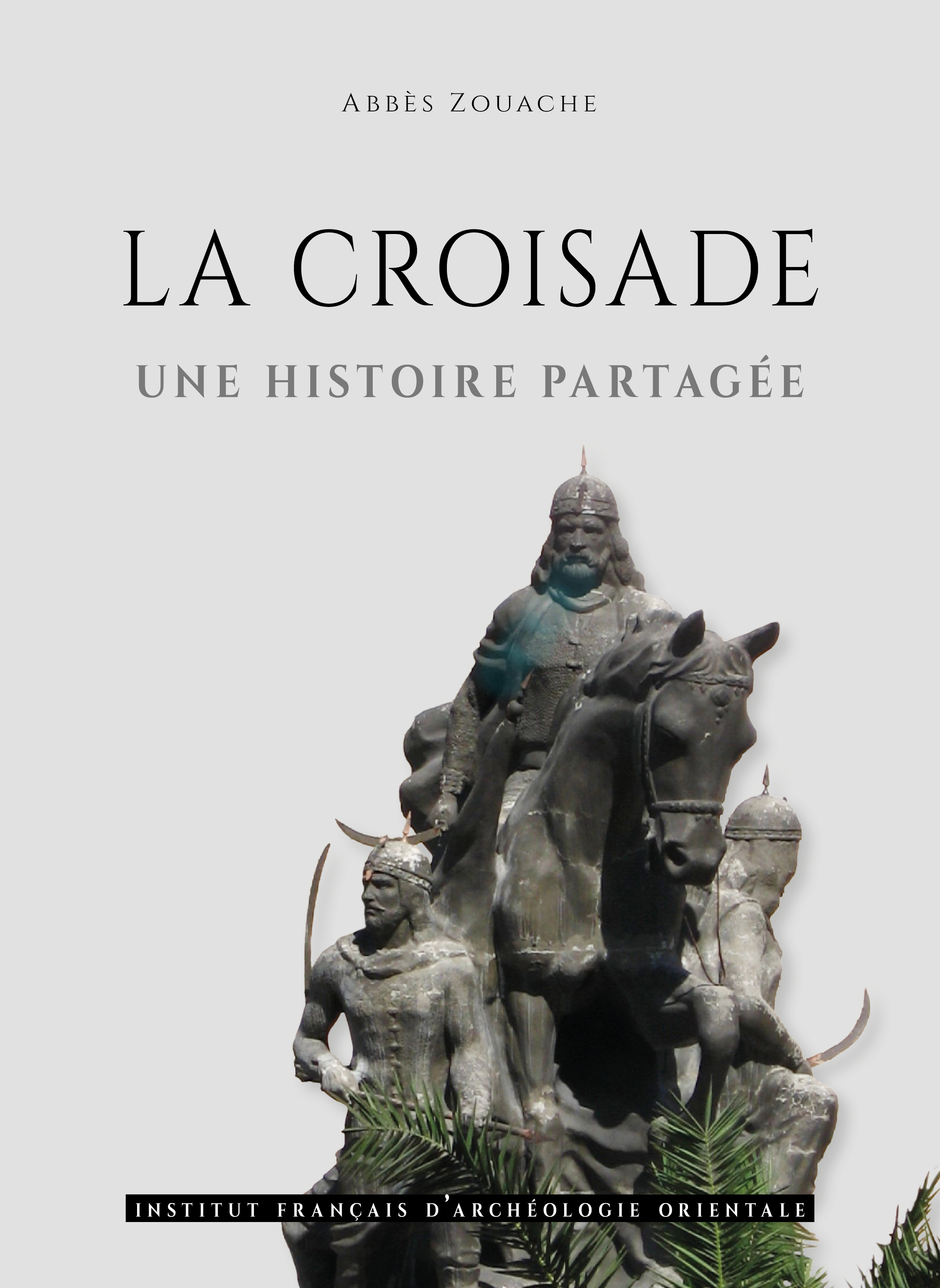
Abbès Zouache
La croisade Une histoire partagée BiEtud 193; 442 p. Qu’est-ce que la croisade ? Comment prendre en compte l’ensemble des regards qui, depuis plus d’un millénaire, se sont portés sur un phénomène qui, aujourd’hui encore, hante les relations internationales ? Abbès Zouache fait appel à des sources variées, latines, arabes, arméniennes ou grecques, qu’il traite sans volonté préalable de les hiérarchiser, et multiplie les rencontres entre des historiographies arabes et européennes ou américaines qui s’ignorent généralement. … [en savoir plus] 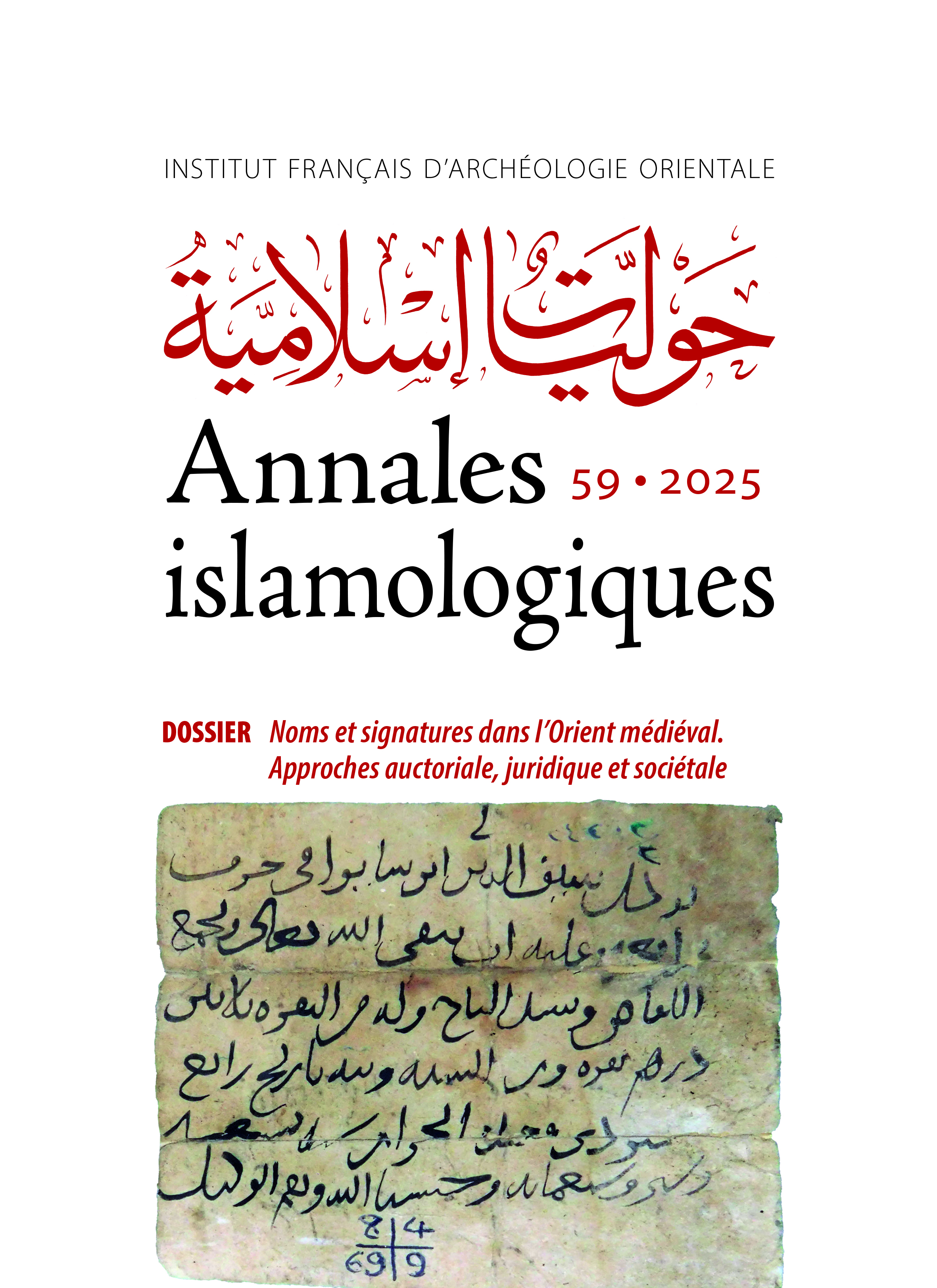
Annales islamologiques 59 Dossier : Noms et signatures dans le Proche-Orient médiéval. Approches auctoriale, juridique et sociétale AnIsl 59; 354 p. Les Annales Islamologiques 59 comprennent une rubrique libre, les varia. Ces varia regroupent 5 articles qui couvrent les champs disciplinaires et chronologiques définis par la ligne éditoriale de la revue. En outre, les Annales proposent un dossier, coordonné par Julie Marchand et Jean-Charles Ducène et regroupant quatre études, intitulé « Noms et signatures dans l’Orient médiéval. Approches auctoriale, juridique et sociétale ». Les … [en savoir plus] |

IFAO Newsletter
July 2025
Sections: (-) Headlines (-)Life at the palace (-) Some questions for Marianne Refaat (-) IFAO notebook (-) Scientific Events (-) Scientific Meetings (-) On the Ifao YouTube channel (-) Publications

◼︎ President Emmanuel Macron at the Ifao.
Headlines
|
The past semester was marked by a series of prestigious visits and major scientific events. The highlight was the reception of the President of the French Republic, Emmanuel Macron, on 7 April during his official visit to Egypt, which took place from 6 to 8 April 2025. The President of the Republic and his accompanying delegation, which included several ministers, notably Philippe Baptiste, Minister of Higher Education and Research, and the directors of numerous French scientific and cultural institutions, spent many hours at the Mounira Palace. They were all able to appreciate the contribution of the IFAO to the knowledge of Egyptian history, as well as the dynamics of openness and exchange that guide our activity. Guided by the director of the IFAO, Pierre Tallet, and the director of studies, Abbès Zouache, the President of the Republic and the delegation were able to discover the various departments of the IFAO and the richness they hold. One of the highlights of the visit was the presentation of the collections of objects and works preserved at the IFAO, including figural ostraca from Deir el-Medina, a 17th-century Coptic-Arabic Bible, and the volumes of plates from the imperial edition of the “Description de l’Égypte” book. The visit ended at the Press Museum, where Hani Moawad gave a demonstration of how the first printing machines used by the IFAO worked. The IFAO also had the honor of welcoming Youssef Boutros Ghali, President of the Coptic Archaeological Society, thereby strengthening the ongoing dialogue with institutions dedicated to the study of Egypt’s multilayered past. Among the highlights of the semester were two major public lectures held at the IFAO, which drew large audiences. The first, on 8 April, was delivered by Professor Zahi Hawass in the grand hall, as part of the 2025 archaeometry Meetings: a day organized by IFAO’s archaeometry division in partnership with the MoTA. The second major lecture was given by Professor John Darnell in the gardens of the IFAO on 7 May, and focused on the earliest hieroglyphic inscriptions of Elkab. On the academic front, the IFAO hosted several conferences this semester, bringing together researchers from various backgrounds, including, on April 15 and 16, the international conference "Orientalists and the Genesis of Arabic Epigraphy (19th - early 20th century)", and on June 18 and 19, the fifth edition of the RIWAQ Academy for young researchers, entitled "Studies on the Ottoman Period: Architecture and Arts".
◼︎ Lecture by Professor Zahi Hawass on 8 April at the Palais Mounira ©A.Bahgat/IFAO On June 12, the IFAO organized a special event, curated by G. Eschenbrenner Diemer, J. Auber de Lapierre, and K. Tawfik, dedicated to the study of wood in Egypt. "Beyond the Tree. A Journey into the Traditions of Egyptian Woodcraft" began with a study day, continued with an exhibition of photos and paintings, and ended with a concert of traditional Egyptian music. In addition, the Institute launched a new lecture series entitled “Cities Seminar”, organized by Dr. Rehab el-Saidi, focusing on the urban landscapes of the Nile Valley across time. The series began with a lecture by Fathi Saleh, former director of the Center for Documentation of Cultural and Natural Heritage (CULTNAT) from 2000 to 2010. The IFAO also had the honor of hosting the annual meeting of the International Association of Egyptologists (IAE), further confirming its role as a global center of reference in Egyptology.
◼︎ Opening of the 'Beyond the tree' exhibition on 12 June 2025 ©A.Bahgat/IFAO |
◼︎ President Emmanuel Macron at IFAO
 ◼︎ Youssef Boutros Ghali ©A.Bahgat/IFAO
◼︎ Annual meeting of the International Association of Egyptologists (IAE) at the IFAO on 12 April©A.Bahgat/IFAO
◼︎ Lecture by Professor John Darnell in the gardens of the IFAO on 7 May ©A.Bahgat/IFAO
|
|
A new digital platform available to all!ArchiSowarContinuing its commitment to making its resources accessible to the scientific community, the IFAO's Archives and Collections Department is opening its online iconographic database "Archi-Sowar", and making available to the public its database which already contains more than 50,000 images from excavations and work carried out in Egypt since its creation. Each image is accompanied by metadata providing information on both the archive document itself and its content, as well as a DOI (Digital Object Identifier), which guarantees unique identification and standardised citation in academic publications. They are all freely downloadable in high definition for scientific use. Currently available in French, this resource will soon be available in English, and then in Arabic, in order to further expand its audience and promote the dissemination of knowledge on an international scale. |
|
|
Archaeological sites and programmes newsFifteen archaeological missions were carried out in the second half of the year: those of the Eastern Desert, Ayn Soukhna, Balat, the Cairo Citadel, Islamic funerary stelae, the Osirian Sanctuaries of Karnak, Ouadi Sannour, Médamoud, Baouît, Coptos, Ouadi el-Jarf, Gebel el-Zeit, Philadelphia and Bouto. The Deir el-Medina, Dendara epigraphy and TT 33 missions had to be cancelled. Among the many fine discoveries is that of a statue head from the late Ptolemaic period on the north coast near Alexandria by the French IFAO mission to Taposiris Magna and Plinthine (IFAO, Hisoma, ULB, ASM Montpellier), a mission co-directed by Bérangère Redon and Joachim Le Bomin. (Watch the presentation of the mission's work on the IFAO Youtube channel: Work at Plinthine; work at Taposiris Magna). Two new videos of the IFAO archaeological missions have been published this semester. Produced by Joseph Ballu (ResEFE), this is a presentation of the excavations by the Mission des Sanctuaires Osiriens de Karnak, co-directed by Laurent Coulon (Collège de France, AOROC UMR 8546) & Cyril Giorgi (INRAP) in The chapel of Osiris Wennefer and Study of bronze statuettes.
|
||
Life at the palace
Some questions for Marianne Refaat..
|
Marianne Refaat, deputy head of the IFAO library, will mark two decades of service to the “beating heart of the IFAO” next year. We asked her a few questions: |
||
Can you tell us about your arrival at the Institute and your first steps in the world of libraries?I graduated from the Faculty of Arts (French Department) at Cairo University in 2005, then I started a job at the “Amis du Livre” bookstore. But just 40 days later, I applied for a position at the IFAO after seeing an announcement in the newspaper. Afterward, I worked under the direction of several heads of the library: Philippe Chevrant, Agnès Macquin, and currently Aurore Ciavatti who each helped me acquire new skills. Library work really appealed to me from the moment I set foot in the IFAO library. So I decided to make it my career. In order to adapt to the job and develop and validate my skills, I took several courses and training courses, notably at BnF, Cairo University and Enssib-Université Senghor. As a result, I obtained my diploma in library management in 2014, and my diploma in Information and Library Sciences (DUSIB) in 2023. |
|

◼︎ Marianne Refeat |
The library has undergone major changes in recent years. Can you tell us more?That's true. The biggest one I can think of is the integration of the IFAO library into the 'SUDOC' union catalogue of French university libraries in 2013. Since then, I have been the cataloguing correspondent for IFAO. Along with the team, we provide the link with this database by entering the records for works acquired by the IFAO, indicating their presence in our library. My colleagues and I also catalogue more than 1,000 works a year in the library's SUDOC holdings. Another notable development is the migration of our own local catalogue, which began in 2017. After a great deal of thought and several trials, we succeeded in implementing the library's new catalogue in 2024, switching from the proprietary Aleph software (Ex Libris) to the open source KOHA software. Now suitable for all types of screen (computers, smartphones), the new interface offers users personalised, intuitive and dynamic functions: an interface available in three languages (French, Arabic, English), more accessible to all; a high-performance, modernised search tool, enabling thematic, chronological or authority-based searches (authors, archaeological sites, subjects, etc.); and a simplified, aesthetic and dynamic results page.
The long-anticipated new library is finally becoming a reality. How do you feel about it, and what will it change for users and staff?I won't go over the many organizational and security challenges posed by the current library, to which we are all, of course, very attached. It goes without saying that the entire library team would have preferred to remain in the heart of the palace. We are attached to these spaces... However, the new library should represent a sustainable solution. In addition, it has many advantages. For example, it should ensure the expansion of the collections in the future, accommodate a larger audience, including people with reduced mobility, and install more accessible and secure shelving. I hope that this project will deliver on all its promises.
|
||
IFAO notebook
Arrival- Christelle André took up her post as IFAO's Accounting Officer in March 2025.
|
|
|
Departures- Joachim Le Bomin, head of the Archaeology Department, left the IFAO in July 2025 after completing his contract. - Axelle Brémont-Bellini, completed her mandate as a scientific member of IFAO at the end of August 2025. |
||
Scientific events
 |
Les conférences de l'Ifao lectures Series |
|
|
|
|
IFAO research seminar |
|
|
|
|
Lecture series: Egyptology Bi-L-ʿarabīOrganised in partnership with "Al-Makân wa-l-Nâs" |
|
|
|
Exploring Egypt Seminar: Histories and HistoriographiesOrganised in partnership with DAIK, NVIC, CAI, PCMA |
|
|
 |
Les rendez-vous de l'archéologie lectures SeriesOrganised in partnership with l’IFE |
|
|
|
|
Les Séminaires Riwaq |
|
|
Workshops
 |
On January 15th 2025, Training by Dina Bakhoum, Antoinette Ferrand & Amr Khairy: Writing Modern History [more] |
|
 |
On February 3rd 2025, Arabic Papyrology Seminar by Laura Aguer : Arabs in the Ptolemaic Ostraca from the Eastern Desert [more] |
|
 |
From 16th to April 17th 2025, Training by Abbès Zouache, Mathilde Prévost and Khaled Younes: Research Methods and Academic Writing, in partnership with Faculty of Tourism and Hotels, University of Sadat City [more] |
|
 |
From 13th to May 14th 2025, Study Day by : Papyri and Historical Inquiry, in partnership with Austrian Archaeological Institute in Cairo (OeAI) [more] |
Expositions
 |
From 9th to April 17th 2025, Exhibition by Philippe Bastide: L’art de la coupe des pierres dans le caire islamique, in partnership with Université Française d’Égypte, Centro Archeologico dell'Istituto Italiano di Cultura- Il Cairo, Dahshoureya Residence [more] | |
 |
From June 12th to July 12th 2025, Exhibition by Julien Auber de Lapierre, Gersande Eschenbrenner Diemer & Kawkab Tawfik: Beyond the Tree, in partnership with Medjehu Project, ASWAT [more] |
Scientific meetings
 |
On April 8th 2025, International conference organized by : Rencontres en Archéométrie 2025, in partnership with MoTA & LMC14-LSCE [more] | |
|
|
From 15th to April 16th 2025, Seminar organized by Dr Ahmed Mansour & prof. Abbès Zouache: المستشرقون ونشأة علم دراسة النقوش العربية منذ القرن التاسع عشر حتى بداية القرن العشرين, in partnership with Bibliotheca Alexandrina [more] | |
 |
From 12th to May 14th 2025, Research Workshop by Marie Bourgeois, Julien Cooper, Maël Crépy: NOMADES programme second workshop [more] |
|
  |
On May 18th 2025, Research Workshop by Camille Rouxpetel: ERC ChrIs-cross First Workshop [more] |
|
 |
On June 12th 2025, Study Day by Gersande Eschenbrenner Diemer, Kawkab Tawfik & Sibylle Emerit: Beyond the Tree, in partnership with Medjehu Project (University of Jaén/University of Lisbon) -EBENES (Ifao) /ASWAT (Cedej/Ifao)/ Paysages sonores (Ifao, EfA, HiSoMA-CNRS, univ. Lyon 2) - projet RIMAnt [more] | |
|
|
On April 29th 2025, Seminar organized by أ.د/ أحمــد الشربينـــي، أ.د/عباس زواش، د/ رحـاب إبـراهيـم الصعيدى : سيمنار حوار المدن, in partnership with الجمعية المصرية للدراسات التاريخية [more] | |
|
|
From 18th to June 19th 2025, IFAO Academies for Young Researchers by أ.د.أحمد الشوكي و أ.د. عباس زواش: دراسات العصر العثماني، العمارة والفنون - الملتقى العلمي الخامس لشباب الباحثين - أكاديمية رواق, in partnership with Faculty of Archaeology, Aïn Sham University [more] |
On the YouTube channel
Publications

Abbès Zouache
Mémorer la croisade Édition et traduction annotée d’al-Ḥarīrī, Kitāb al-Iʿlām wa-l-tabyīn fī ḫurūǧ al-Faranǧ al-malāʿīn ʿalā bilād al-muslimīn TAEI 64; 210 p. The Kitāb al-Iꜥlām wa-tabyīn fī ḫurūǧ al-Faranǧ al-malāꜥīn ꜥalā bilād al-muslimīn is written at the beginning of the 10th/16th century by an unknown historian, Aḥmad b. ꜥAlī al-Ḥarīrī, who probably lived in the Lebanese mountains near Damascus. Abbès Zouache offers a critical edition and a french translation of this text, which shows that several centuries after the conquest by the Mamluks of Saint-Jean-d’Acre, in 1291, and the disappearance of the kingdom of … [more] 
Gwenola Graff
Les vases C-Ware à décor géométrique de Nagada I (Égypte, IVe millénaire) CCE 12; 226 p. The images left on various media by the pre-pharaonic culture of Nagada, Egypt, in the 4th millennium are abundant and of high quality. However, they are not always easy to understand or interpret. The bowls and vases from Nagada I (3900-3700 BC), to which this study is devoted, are dark red in color and decorated with simple geometric shapes painted in white. For a long time, these repetitive, monotonous compositions have discouraged researchers and made interpretation difficult. It … [more] 
Susan Böttcher, Christian Leitz, Daniela Mendel
Athribis IX Die Fassade, der Pronaos, der Querraum und die dekorierten Blöcke und Fragmente des Tempels Ptolemaios XII Temples, Athribis 9; 524 p. The present volume records the textes and reliefs of room A (pronaos) and B, as well as all the decorated blocks which were found during the excavation of the temple. Until then, all texts of this volume were unpublished. Herewith all inscriptions of the temple of Ptolemy XII are published. [more]
Sylvie Marchand (éd.)
Bulletin de liaison de la céramique égyptienne 33 BCE 33; 252 p. This new issue of the Bulletin de liaison de la céramique égyptienne (BCE 33) presents in a first part its “parcours régional”. It is rich year by the contribution of major archaeological works. The first paper concerns the study of a set of small painted domestic jars dated to the Middle Kingdom from the site of Ayn Soukhna (Bats). The second presents an assemblage of ceramic vases, Egyptian and imported, and stone vases unearthed in a tomb of the 18th dynasty on the site of … [more] 
Annalaura Turiano
Missionnaires italiens et enseignement en Égypte (1890-1970) De la pastorale migratoire à la coopération technique RAPH 49; 470 p. By focusing on the Salesian mission in Egypt, this book adds an Italian dimension to the study of the Christian missionary phenomenon in the Near East and addresses a little-known educational sector, namely vocational education. Drawing on unpublished archives in several languages and oral interviews, the author examines a century of missionary presence, tracing the careers of several generations of students and showing how the mission's vocational schools encouraged the formation of … [more] 
Mehdi Berriah (éd.), Abbès Zouache (éd.)
The Medieval Jihad Texts, Theories, and Practices RAPH 50; 236 p. Far from being a simple Islamic reaction to the Crusades, or a monolithic ideology setting out a law of war imposing standards of behavior on all social actors, jihad is a phenomenon with multiple dimensions: religious, jurisprudential, ideological, military, political, economic, social, cultural and literary. The authors of the various contributions published in this volume have been invited to reflect on these multiple dimensions, with freedom to take a long-term view, and with freedom to … [more] 
Robert Vergnieux, Alexandre Belov
Les scènes navales figurées sur les talatat du IXe pylône de Karnak BiGen 77; 220 p. The reliefs on the talatat blocks discovered in the western mole of the 9th pylon at Karnak constitute an important source of iconographic information. Some of these reliefs depict nautical scenes, and provide extremely precise details about large Nilotic freighters, their rigging, crews, and the cargo they carried. Each assemblage of reliefs presented opens a new window of understanding. Their precise dating to the early years of Akhenaton’s reign also provides a useful … [more]

Florence Albert (éd.), Chloé Ragazzoli (éd.)
Questions sur la scripturalité égyptienne Des registres graphiques aux espaces d’écriture BiEtud 192; 520 p. "Text," "writings," "book"—whether of stone or papyrus—are cultural objects whose definitions, often implicit, vary across time and space. Their articulation reveals distinct regimes of writing, where the notions of "author," "work," and "scribe" take on particular meanings; historicising these notions opens new perspectives on the meaning of texts and on their world of production and reception. This volume presents the pathways collectively pursued to grasp the culture of … [more] 
BIFAO 125 BIFAO 125; 592 p. The Bulletin of the French Institute of Oriental Archaeology (BIFAO), which made its first appearance in 1901, covers all fields of Egyptology. Studies published in the BIFAO, extending chronologically from prehistory to the Byzantine period, illustrate the present state of research in the disciplines of archaeology, epigraphy, lexicography, history of art and philology … [more] 
Guillemette Andreu-Lanoë, Dominique Valbelle
دليل دير المدينة GIFAO 5; 178 p. The site of Deir el-Medina is unique in its particularly well-preserved archaeological remains, which represent an exceptional ensemble in Egypt (consisting of a village, a necropolis and a temple), and in the rich documentation that it has delivered across the millennia. The inhabitants of Deir el-Medina—artists as well as craftsmen—dug and decorated the hypogea of the sovereigns in the Valley of the Kings and Queens. They did not restrict the use of their talents to … [more] 
Abbès Zouache
La croisade Une histoire partagée BiEtud 193; 442 p. What is the Crusade? How can we take into account all the views that have been expressed for more than a thousand years on a phenomenon that still haunts international relations today? Abbès Zouache draws on a variety of sources—Latin, Arabic, Armenian and Greek—which he treats without any prior intention of ranking them, and increases the number of encounters between Arab and European or American historiographies, which are generally unaware of each other. This approach allows him to … [more] 
Annales islamologiques 59 Dossier : Noms et signatures dans le Proche-Orient médiéval. Approches auctoriale, juridique et sociétale AnIsl 59; 354 p. Annales Islamologiques 59 includes an open section, the varia. They comprise 5 articles covering the disciplinary and chronological fields defined by the journal’s editorial policy. The Annales also feature a special dossier, coordinated by Julie Marchand and Jean-Charles Ducène and comprising four studies, entitled "Names and signatures in the medieval Near East. Authorial, legal and societal Approches". Studies carried out over the last … [more] |
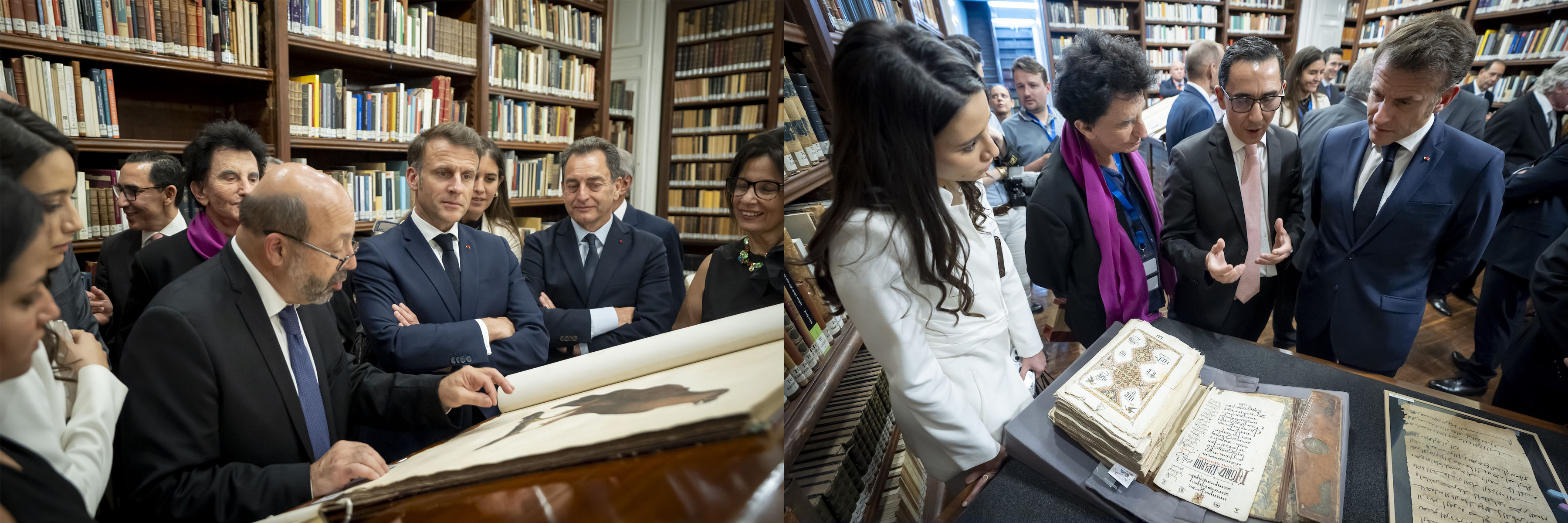


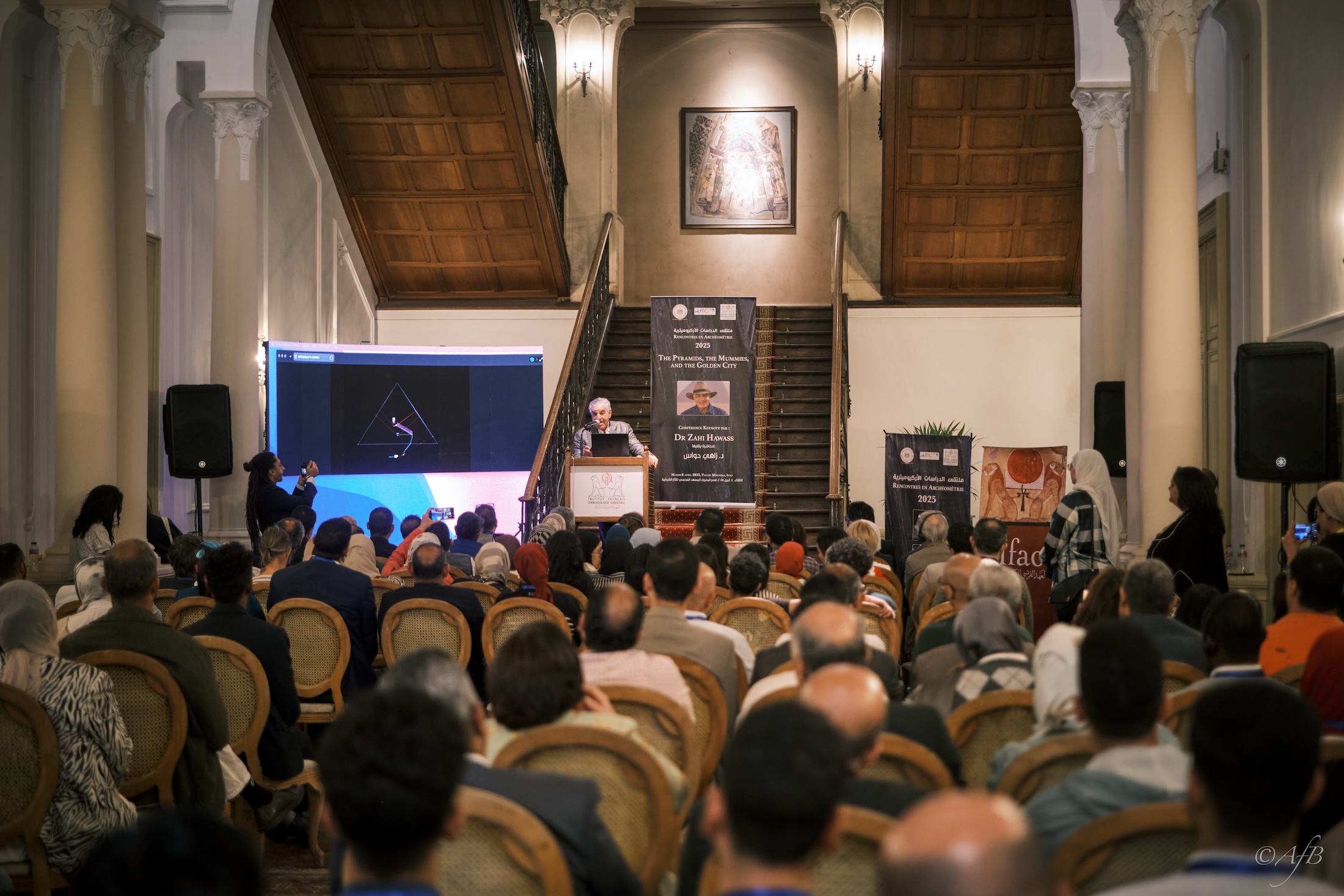
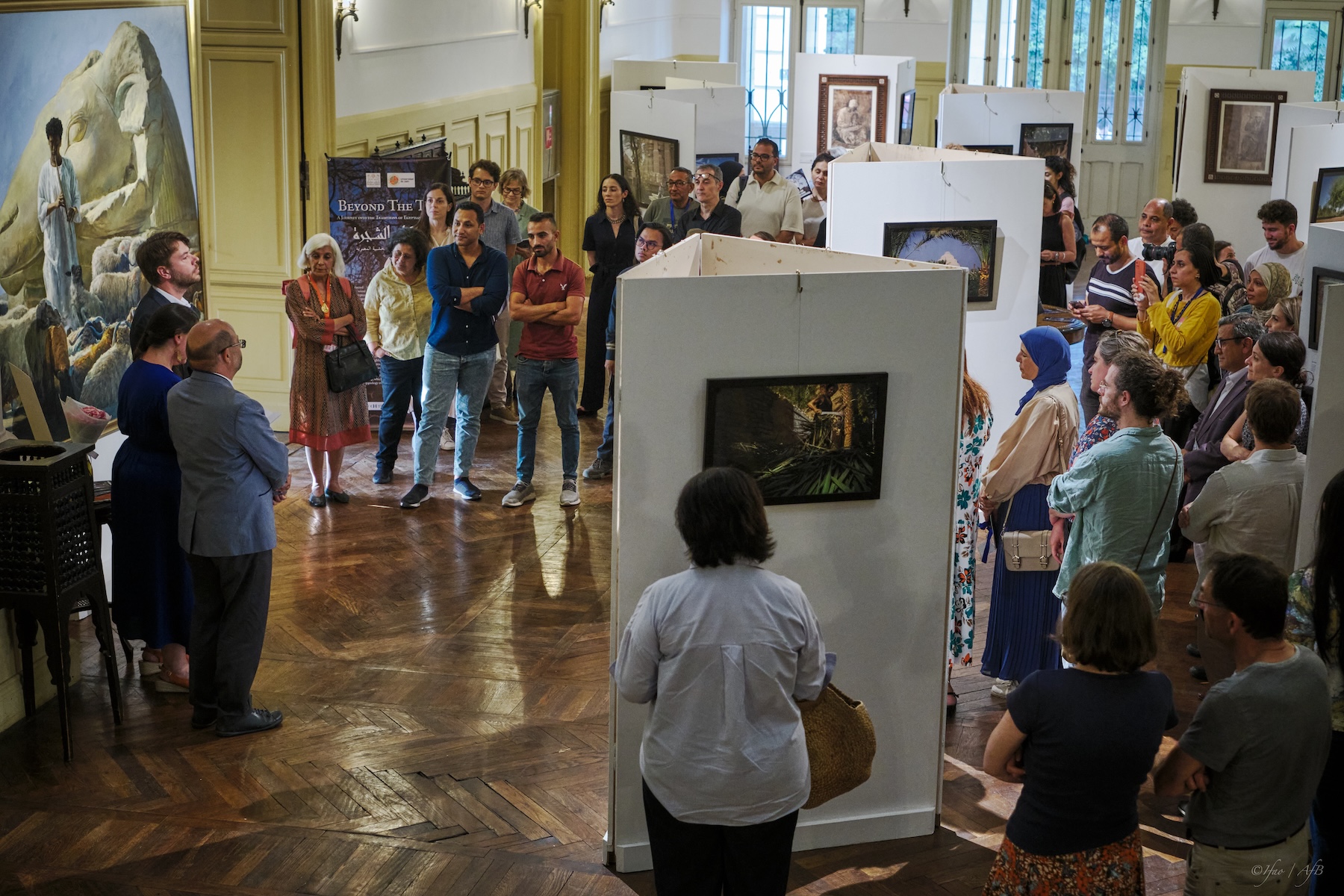
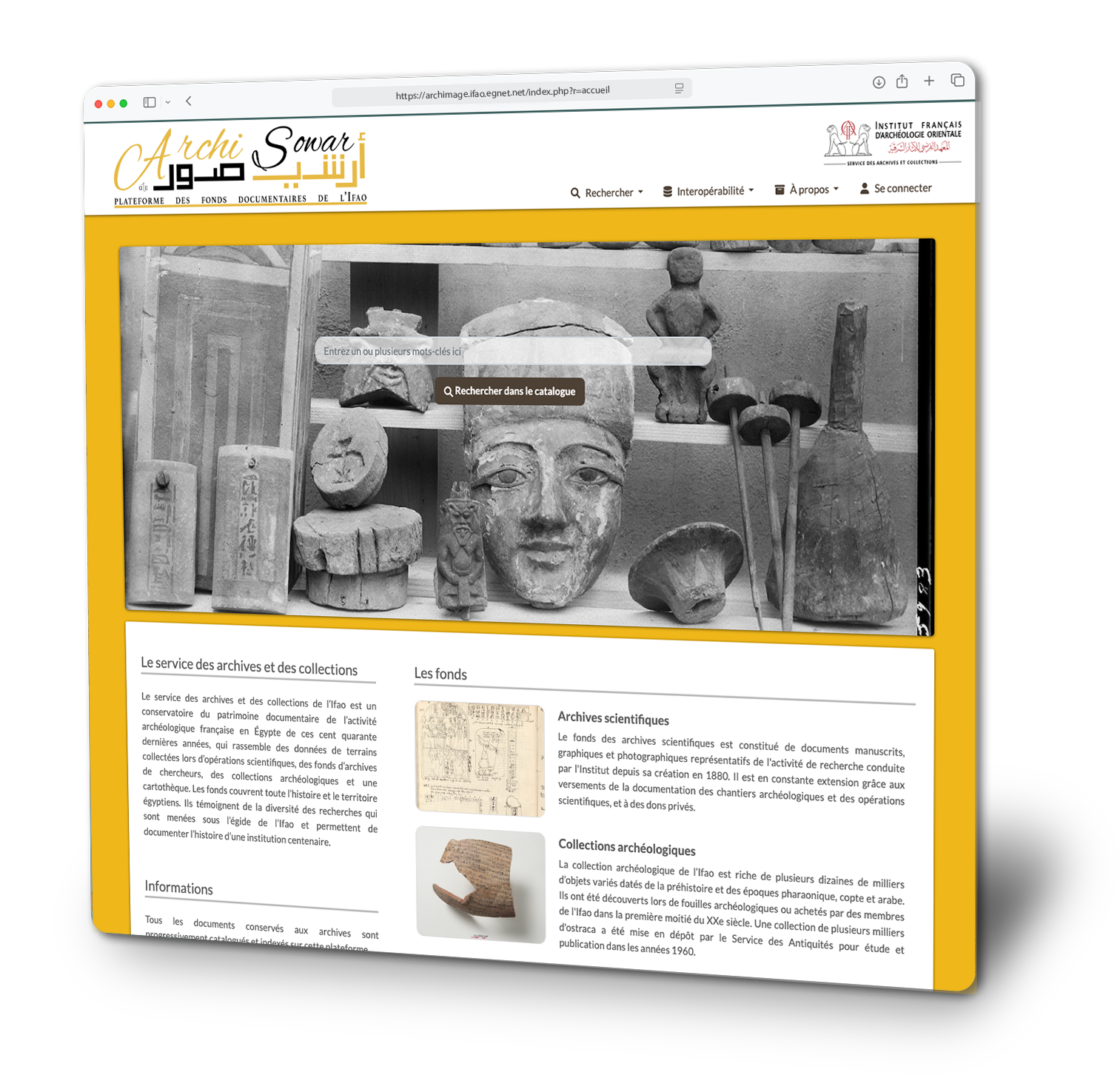
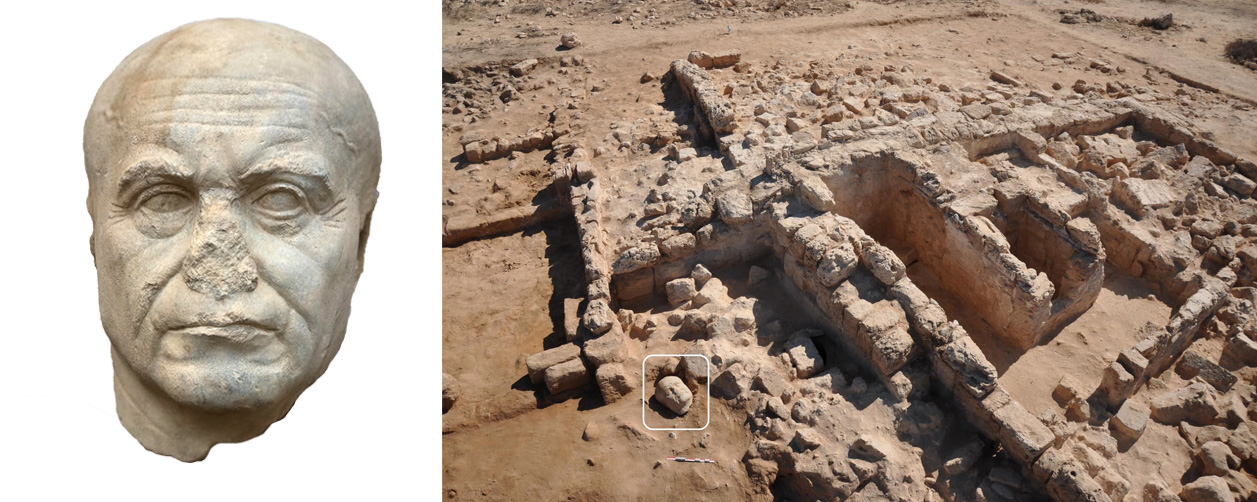 ◼︎ Tête de statue de la fin de l'époque ptolémaïque découverte à Taposiris © Ifao
◼︎ Tête de statue de la fin de l'époque ptolémaïque découverte à Taposiris © Ifao
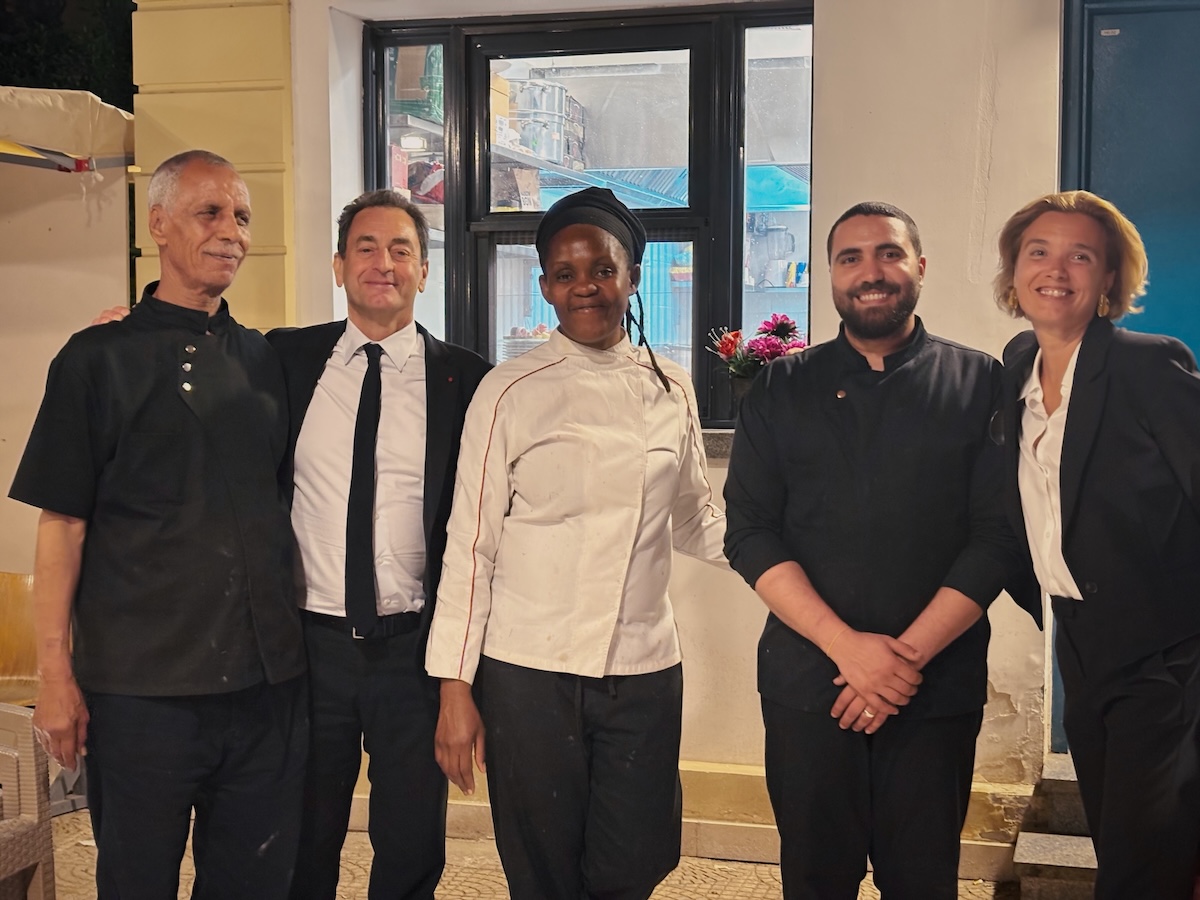

 ◼︎ Garden Party, 2025 ©A.Bahgat/Ifao
◼︎ Garden Party, 2025 ©A.Bahgat/Ifao
